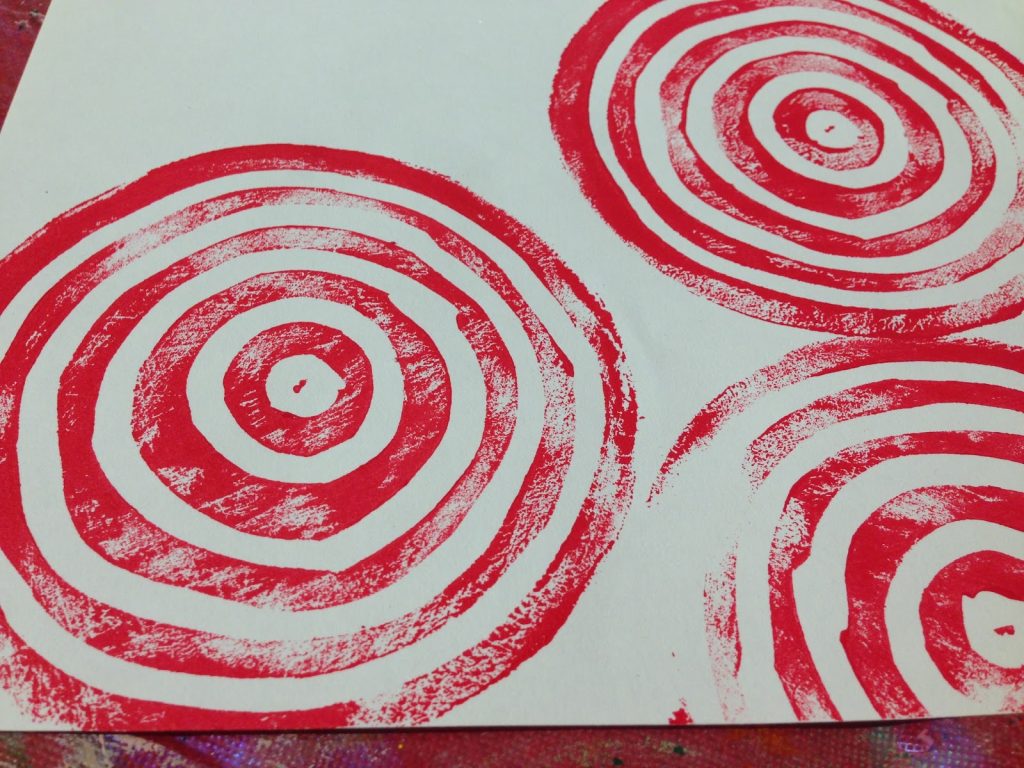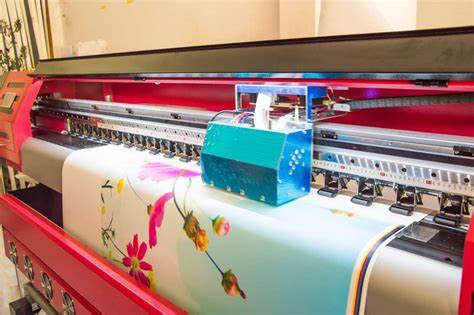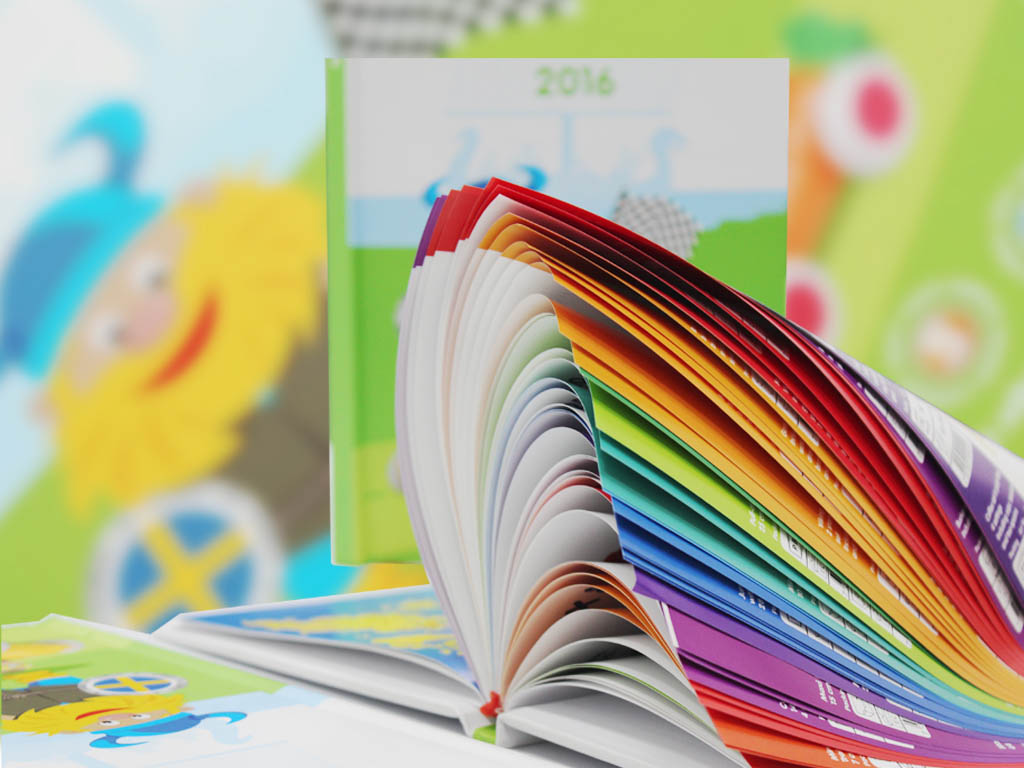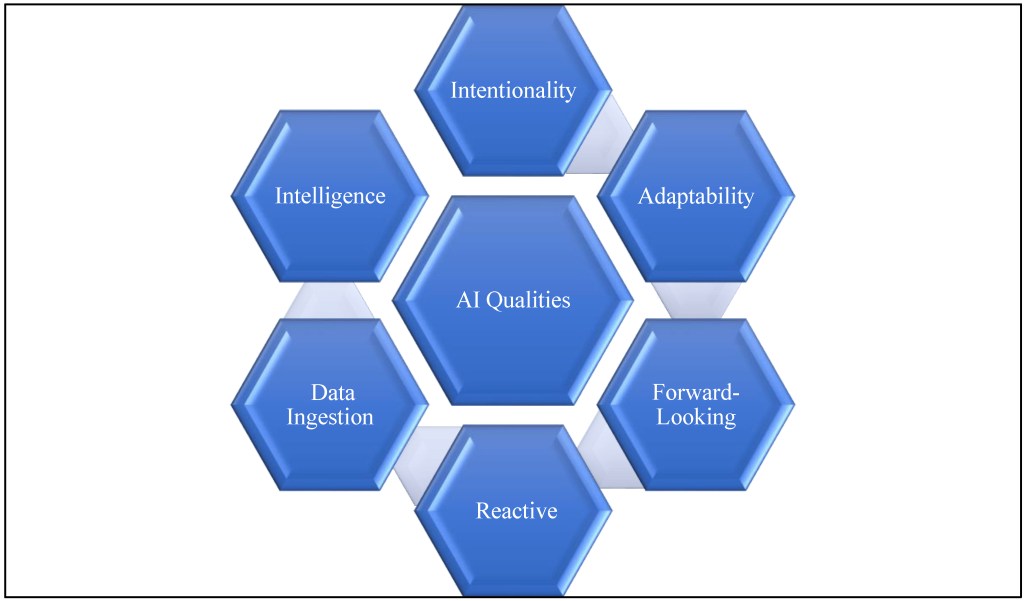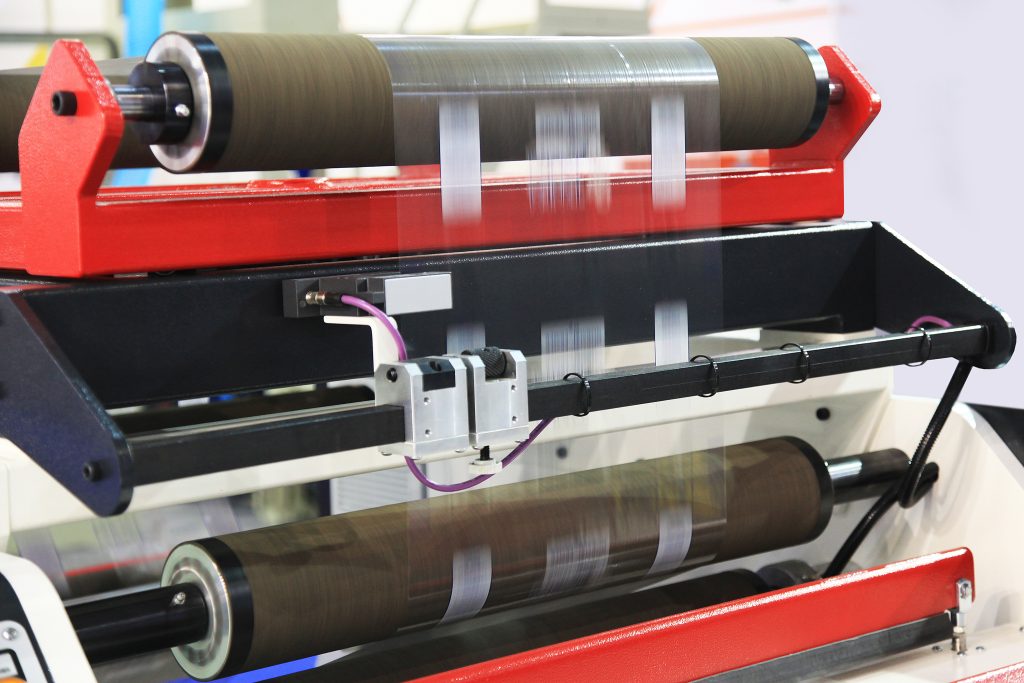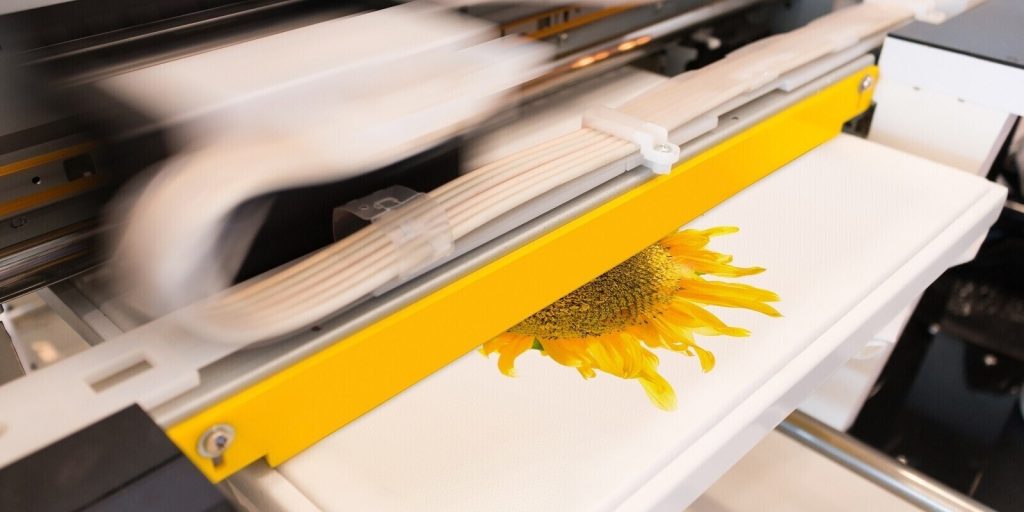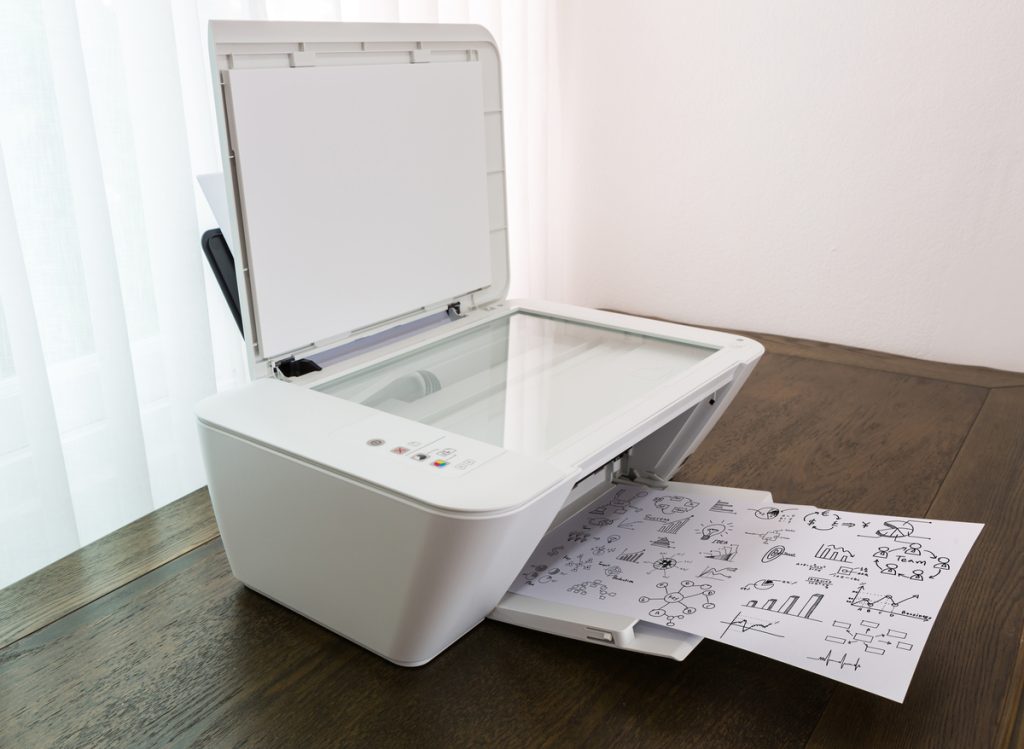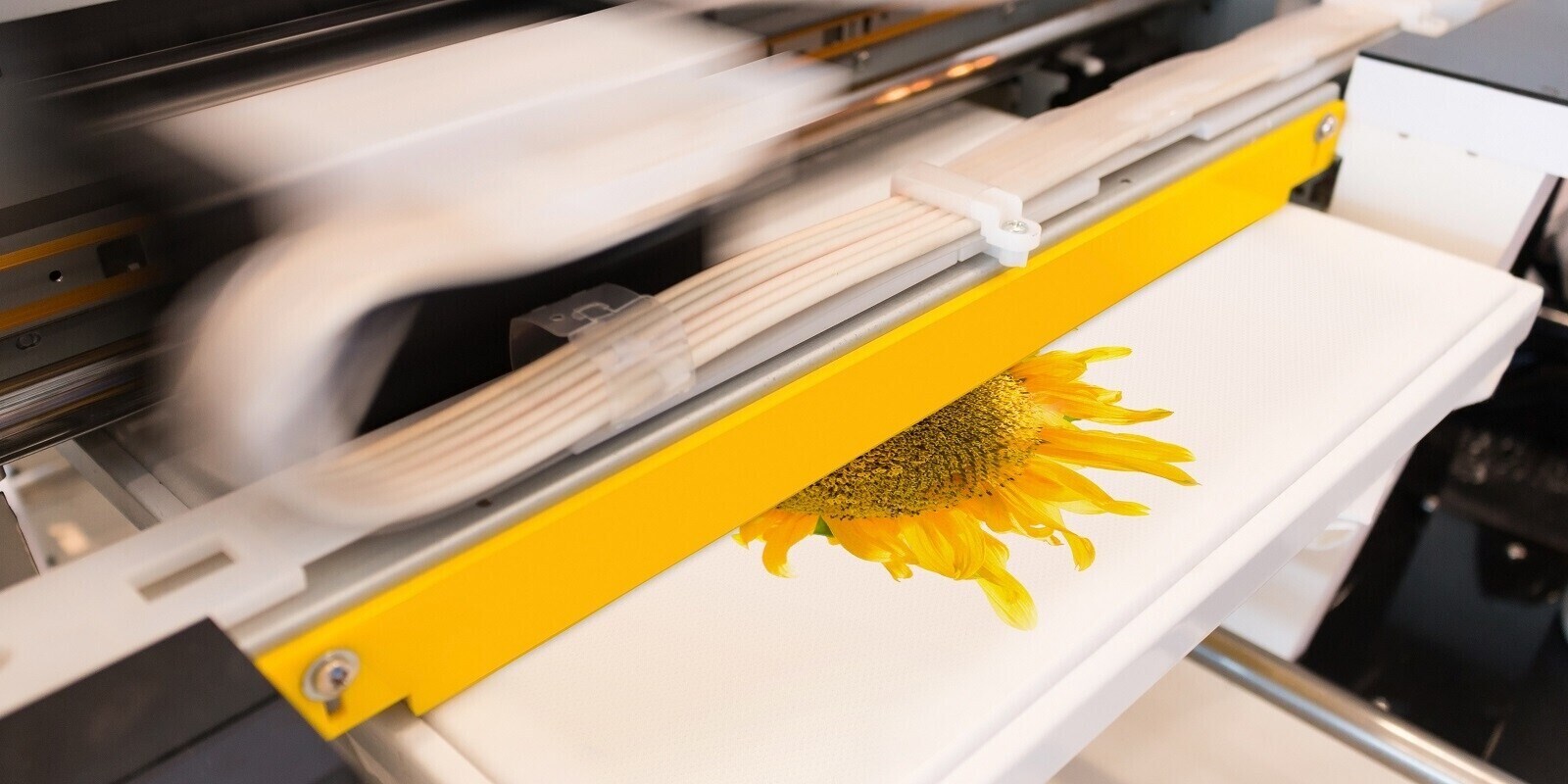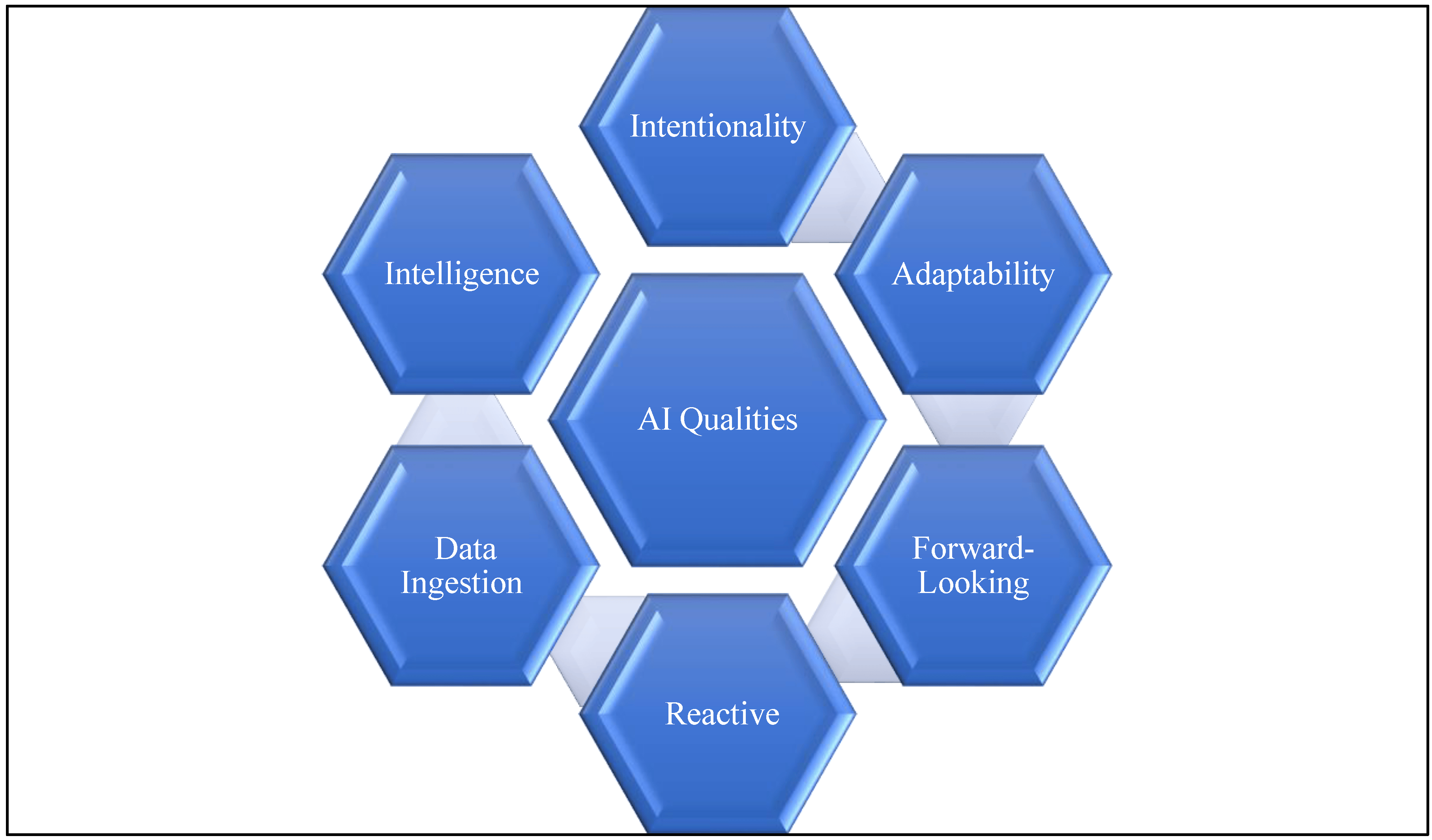Welcome
In today’s world, where digital marketing seems to be the norm, physical brochures still hold a crucial place in successful promotional campaigns. The process of brochure printing goes beyond just putting ink to paper; it requires a careful balance of strategic design, content creation, and quality production processes to ensure that the final product effectively communicates the brand message and prompts customer engagement. Brochures have been a staple in advertising for decades, and for good reason. They are versatile, shareable, and make it easy for prospective customers to understand what you offer and why they should choose you over the competition. They can be distributed in person, through mail, or at events, and can be designed to fit any budget, making them accessible to businesses of all sizes. When it comes to brochure printing, the process is a bit more complicated than one might think. A lot of thought and effort goes into creating a brochure that is not only visually appealing but also communicates the right message to the target audience. From selecting the right paper and finishes to choosing the right font and colors, there are countless decisions that need to be made before the first page is printed. One of the most important aspects of brochure printing is creating a design that is both aesthetically pleasing and functional. A well-designed brochure should be easy to read, visually appealing, and have a clear message that communicates what the business does and why they are the best choice in the market. This can be achieved through a combination of typography, color, images, and whitespace, among other design elements. Moreover, the content of the brochure is equally important. The text should be concise, compelling, and easy to understand. The language should be tailored to the target audience, using language and tone that resonates with them. Additionally, the brochure should be structured in a way that guides the reader through the content and emphasizes the most important points. In conclusion, brochure printing is a complex process that requires careful planning and execution to create an effective marketing tool. By taking the time to design a brochure that is visually appealing, easy to read, and communicates the brand message, businesses can create a powerful marketing tool that captures the attention of their target audience and drives sales. Brochure printing is an essential component of integrated marketing strategies that businesses can leverage to promote their brand and reach new customers. The secret to its effectiveness lies in the amalgamation of high-quality production, compelling design, and consumer-focused content. These three elements work together to create a marketing tool that not only informs potential clients but also evokes emotional responses that drive engagement and conversions. One of the key advantages of brochure printing is the tangible nature of the product. Unlike digital marketing materials, such as emails or website banners, brochures can be physically held and examined. This tactile experience creates a stronger connection with potential clients and increases the likelihood of them remembering your brand. Additionally, the use of creative and strategic space in brochure design allows businesses to communicate more information in a visually appealing way. In a marketplace saturated with digital noise, a well-crafted brochure is a powerful touchpoint in the consumer journey. It offers a quiet yet persuasive space for your brand’s story to unfold, making it a vital tool for businesses looking to stand out from the competition. By showcasing their products or services in a visually appealing way, businesses can create a lasting impression that drives engagement and conversions. In conclusion, brochure printing is a marketing tool that businesses should not overlook. With high-quality production, compelling design, and consumer-focused content, brochures can help businesses reach new customers and increase brand awareness. In a world where digital marketing is dominant, a well-executed brochure can offer a refreshing break from the noise and create a lasting impression in the minds of potential clients. To learn more, click here In today’s competitive business environment, effective marketing and promotional materials are crucial for any business to succeed. These marketing materials can help businesses to reach potential customers, build brand recognition and awareness, and ultimately, drive sales. In Phoenix, AZ, there are numerous commercial printing services available to help businesses create custom marketing collaterals that can help them achieve these goals. Commercial printing services provide a wide range of services to businesses, including creating business cards, event flyers, banners, brochures, posters, and more. These services can be customized to meet the unique needs of each business, including the design, size, paper type, and quantity. Additionally, commercial printers can provide businesses with guidance and advice on how to create effective marketing materials that will engage and resonate with their target audience. However, with so many commercial printers offering various services, choosing the best one that meets your specific needs can be a daunting task. To ensure that you choose the right commercial printing service, you should consider several factors, including the quality of their work, their pricing, their turnaround time, and their reputation in the industry. By taking the time to research and evaluate your options carefully, you can find a commercial printing service that can help you create effective marketing materials that will drive your business’s success. Are you tired of spending hours researching and comparing commercial printers without finding the right one for your business needs? Look no further! Our comprehensive guide is here to help you navigate the process and select the ideal commercial printer for your business. We understand that each business has unique printing requirements, and it can be challenging to choose the right printer that fits your needs. Our guide will provide you with all the necessary information to make an informed decision. We’ll walk you through the essential factors to consider, such as printer type, print quality, speed, and cost per page. Moreover, we’ll guide you through the different types of printers available in the market, such as inkjet, laser, and thermal printers, and their respective pros and cons. We’ll also help you evaluate the different features that printers offer, such as networking capabilities, security features, and mobile printing options. Our goal is to make the printer selection process as simple and stress-free as possible for you. We’ve done the research, and we’re confident that our guide will provide you with the information you need to make the best decision for your business. So, sit back and relax, and let us help you select the perfect commercial printer for your business. When selecting a commercial printer, there are several factors you need to consider. One of the most critical factors is the printer’s experience and expertise. It is essential to choose a printer that has a proven track record of producing high-quality work. You can evaluate their experience by looking for reviews and testimonials from satisfied customers. These reviews will help you make an informed decision about the printer you choose. In addition to experience, you should also consider the printer’s capabilities. Different printers offer different types of services, such as digital printing, offset printing, or large format printing. Make sure you choose a printer that offers the services you need for your project. Another important factor to consider is the printer’s customer service. You want to work with a printer who values your business and is willing to work with you to ensure your project is a success. Look for a printer who is responsive to your needs and is available to answer any questions you may have. Finally, you should also consider the printer’s pricing. While cost should not be the only factor you consider, it is essential to choose a printer who offers competitive pricing for their services. Make sure you get quotes from several printers before making a final decision. By considering these factors, you can choose a commercial printer who will meet your needs and exceed your expectations. The second factor to consider is the printer’s capabilities. Does the printer offer the services you need? Do they have the expertise to handle your project? Check if the printer has the latest technology and equipment to produce high-quality prints. The third factor to consider is the printer’s pricing. While cost should not be the only factor to consider, you want to work with a printer that offers a fair and reasonable price for their services. Compare pricing from different printers and ensure you get value for your money. In conclusion, choosing the right commercial printer for your business requires careful consideration. By evaluating the printer’s experience, capabilities, and pricing, you can make an informed decision to ensure your marketing campaigns’ success. We hope our guide has helped provide you with the information to make the right choice. Several essential factors must be considered when selecting a commercial printer in Phoenix, AZ. One of the first things you’ll want to do is conduct thorough research. This can be accomplished through various means, such as browsing the internet for commercial printer options, seeking recommendations from co-workers, or exploring local directories. Once you’ve compiled a list of potential printers, it’s essential to take the time to evaluate each one carefully. This means reading feedback and testimonials from prior clients to ensure that the printer you choose is trustworthy and dependable. You’ll also want to consider factors such as price, turnaround time, and the quality of their work. Of course, choosing a commercial printer is just the first step. Once you’ve selected a printer that meets your needs, you’ll want to work closely with them to ensure your print job is completed satisfactorily. This may involve providing detailed specifications, proofing samples, and communicating regularly throughout printing. Selecting a commercial printer in Phoenix, AZ requires careful consideration and research. By evaluating your options and working closely with your chosen printer, you can ensure that your print job is completed on time and to your exact specifications. Finding the right printer is essential for achieving optimal outcomes when it comes to commercial printing services. It’s not enough to choose any available printer. To ensure that you get the best results for your needs, it is essential to consider the expertise of the printer that you prefer. This means looking for a printer with experience in the specific type of printing service you require. For example, if you need business cards or brochures printed, it is recommended that you look for a printer that specializes in these services. By doing so, you can be confident they possess the required knowledge and equipment to deliver top-notch prints that meet your specifications. So take the time to research and find a printer, like Copyfast Printing, with the expertise and experience needed to provide the best possible results for your printing needs. Commercial printing, advanced equipment, and technology are necessary to ensure your project is executed effectively. If you’re looking for a commercial printer in Phoenix, AZ, it’s essential to research and verify that they have the necessary equipment and software to handle your printing needs. For instance, if you need large banners, confirming that the printer has a large-format printer capable of producing high-quality prints is essential. In addition to having the right equipment, it’s also essential to choose a reliable printer with a good reputation in the industry. You want to work with a printer who has experience in the type of project you need to be completed, as this will ensure that they can deliver the results you are looking for. Another factor to consider when choosing a commercial printer is their level of customer service. You want to work with a printer who is responsive to your needs and can provide the support you need throughout the printing process. This includes being available to answer any questions you may have and providing you with updates on the status of your project. Ultimately, when it comes to commercial printing, choosing a printer that can meet your specific needs and deliver high-quality results is essential. By taking the time to research your options and select a printer that has the right equipment, experience, and customer service, you can ensure that your project is executed effectively and meets your expectations. When collaborating with commercial printers, it is essential to consider delivery time and shipping options. Verifying that the printer can meet your delivery timeline and has dependable shipping alternatives is crucial. This will guarantee that your printed materials reach you on time and in excellent condition. It is also essential to consider the quality of the printing services offered. You want to ensure the printer produces high-quality output that meets your expectations. Moreover, it is essential to check if the printer can accommodate any special requests or requirements that you may have. This includes the type of paper or ink you want to use, the size and format of your print materials, and any other customizations you may need. Considering these factors, you can ensure that your collaboration with the commercial printer is smooth, hassle-free, and results in top-notch printed materials. Finally, customer service is crucial when choosing a commercial printer in Phoenix, AZ. Look for printers with a friendly and responsive customer service team that can answer your questions and guide the printing process. Choosing the right commercial printer in Phoenix, AZ is essential for any business’s printing needs. Research your options, look for expertise, check for equipment and capabilities, verify delivery time and shipping options, and ensure quality customer service. With these tips, businesses can choose a commercial printer that delivers high-quality prints, meets their printing timelines, and provides excellent customer service. Getting it right the first time will save you money in the long run while ensuring that your printed materials will impress your clients and customers. Tarot cards, ancient relics steeped in mystique, have transcended time and space, evolving from their enigmatic origins to become potent instruments for self-discovery, guidance, and profound spiritual insight. Rooted in the depths of history, tarot cards serve as gateways to the collective unconscious, offering seekers a glimpse into the intricate tapestry of human experiences. In the digital age, where technology converges with spirituality, the sacred practice of tarot reading has seamlessly integrated with modern convenience, giving birth to the phenomenon of printable tarot cards. This amalgamation of ancient wisdom and digital innovation not only preserves the integrity of traditional tarot but also expands its horizons, making this transformative practice accessible to seekers across the globe. **1. ** A Historical Odyssey: **2. ** Digital Alchemy: **1. ** Symbolic Profundity: **2. ** Artistic Alchemy: **3. ** Interactive Intimacy: **1. ** Intuitive Communion: **2. ** Daily Rituals and Empowerment: **3. ** Empowered Decision-Making: **1. ** Virtual Sanctuaries: **2. ** Educational Abundance: Printable tarot cards, in their seamless fusion of ancient wisdom, artistic expression, and digital convenience, transcend the realms of mere fortune-telling. They become portals to spiritual enlightenment, guiding seekers through the labyrinth of existence, illuminating the path with the light of self-awareness and cosmic wisdom. Each printed card becomes a key, unlocking the doors to the seeker’s innermost truths, dreams, and fears. In the quietude of a tarot reading, seekers embark on a sacred odyssey – an odyssey of self-discovery, spiritual awakening, and the eternal quest for meaning and purpose. In the intricate dance between symbolism and design, tradition and innovation, printable tarot cards emerge as sacred tools, enriching the lives of seekers and illuminating their paths with the profound insights found within the cards’ enigmatic symbols. Through the artistry of design and the mystique of tarot, printable tarot cards continue to captivate the hearts and minds of individuals worldwide, offering a glimpse into the vast tapestry of human spirituality and the timeless quest for self-discovery. The journey of tarot, in its printable form, transcends the constraints of time and space, becoming a profound odyssey – an odyssey of self-discovery, spiritual enlightenment, and the eternal quest for the mysteries that lie within and beyond the tangible world. In the sacred act of printing tarot cards, seekers are not merely engaging in divination; they are embracing a transformative spiritual practice. Each printed card is a testament to the seeker’s willingness to explore the depths of their soul, inviting the wisdom of the universe to unfold before them. As seekers shuffle, draw, and contemplate the printed cards, they embark on a soulful pilgrimage, transcending the boundaries of the mundane and entering the realm of the numinous. Printable tarot cards, with their ancient lineage and modern adaptability, stand as portals to infinite possibilities. They are not just cards; they are keys to the seeker’s innermost truths. In the hands of the earnest seeker, printable tarot cards become more than a divination tool; they become companions on the spiritual journey, illuminating the path with the radiance of self-discovery and cosmic wisdom. As the digital age continues to unfold, the allure of printable tarot cards remains undiminished. They are not bound by the constraints of time or location. Instead, they traverse the digital highways, reaching seekers in every corner of the world, uniting them in a shared quest for enlightenment and self-realization. Through the alchemical fusion of ancient wisdom and contemporary technology, printable tarot cards continue to inspire, empower, and guide seekers, reminding them that the universe, in all its mysteries, is within their grasp. In the dance between the physical and the digital, the mystical and the mundane, printable tarot cards whisper a timeless truth – the journey of self-discovery knows no bounds. Seekers, armed with these printed cards, are not merely fortune-tellers; they are spiritual voyagers, exploring the infinite landscapes of the soul, one card at a time. As they print each card, they print a page of their own spiritual narrative, embracing the profound wisdom that tarot, in its printable form, has to offer. In this boundless tarot universe, where ancient wisdom meets digital innovation, seekers find not just answers, but a profound connection to the cosmos. Each printed tarot card becomes a beacon, guiding them through the labyrinth of existence, revealing the hidden truths of their souls, and reminding them that the universe, with all its mysteries and marvels, resides within them. As seekers print their tarot cards, they are not just crafting a deck; they are crafting their destiny, one card at a time. And in the sacred space between the printed card and the seeker’s fingertips, magic happens – the magic of self-discovery, enlightenment, and the eternal quest for spiritual truth. In this realm of infinite possibilities, where the tangible and the ethereal converge, printable tarot cards stand as symbols of the seeker’s courage to explore the unknown. As seekers print these cards, they are not just embarking on a tarot reading; they are embarking on a profound odyssey – an odyssey that transcends time and space, leading them to the very essence of their being. And in the quiet moments of a tarot reading, as the printed cards are laid out before them, seekers realize that they are not just reading cards; they are reading the story of their own souls, written in the language of symbols and intuition. In this vast tarot cosmos, where symbolism becomes a language and intuition becomes a guide, printable tarot cards serve as maps, leading seekers to the uncharted territories of their subconscious minds. As seekers print these cards, they are not just engaging in a divinatory practice; they are embarking on a sacred quest – a quest to unveil the mysteries of their own souls and the universe that surrounds them. And in the sacred act of printing tarot cards, seekers discover that the tarot universe is not just a realm of predictions; it is a realm of transformation, where every printed card becomes a catalyst for self-discovery and spiritual evolution. So, as you embark on your tarot journey, remember the power that lies within the printed cards. Each card carries a message, a lesson, and a revelation. Each card is a doorway, inviting you to step into the vast and wondrous universe of tarot. As you print these cards, do so with reverence and intention, for in that moment, you are not just printing pieces of paper; you are printing the keys to your own spiritual awakening. Embrace the printed cards, for they are not just ink on paper; they are portals to the infinite possibilities that lie within you and the universe. In the realm of printable tarot cards, the seeker becomes the sage, and the tarot deck becomes a boundless book of wisdom, waiting to be read, explored, and cherished, one card at a time. In the dynamic world of design and printing, creativity knows no bounds. While paper and fabric have traditionally been the primary canvases for human expression, today’s designers and innovators are pushing the boundaries of what can be printed on. From the industrial allure of metals to the natural beauty of wood, from the transparency of glass to the solidity of concrete, the possibilities are virtually limitless. In this exploration, we’ll delve into the captivating realm of printing on unconventional surfaces, where technology, creativity, and craftsmanship converge to redefine design and communication. Paper has served as a canvas for human expression for centuries. However, designers and printers have expanded their horizons to explore unconventional surfaces. Here are some exciting possibilities: Printing on metal surfaces has gained popularity in various industries, including automotive, signage, and home décor. Metals like aluminum, stainless steel, and brass offer a sleek and modern aesthetic. Techniques such as UV printing and sublimation achieve vibrant and long-lasting results. Printing on glass opens up possibilities for interior designers, architects, and artists. Glass panels, windows, and decorative pieces can be transformed with intricate patterns, images, and text. UV printing and screen printing are commonly used methods for glass surfaces. Wood is a timeless material that blends natural warmth with design versatility. It’s often used for custom furniture, flooring, and wall art. Direct printing and transfer methods allow intricate designs on various wood surfaces. From acrylic to PVC, plastics are used for signage, retail displays, and promotional items. Printing on plastic involves techniques like UV printing, solvent printing, and thermal transfer for vibrant colors and durability. Printing on stone surfaces has gained traction in architecture and interior design. Natural stones like marble and granite can be customized with intricate patterns and images. UV-curable inkjet printing achieves precise, high-resolution results. Ceramic surfaces, such as tiles and pottery, offer a blank canvas for designers. These surfaces can be adorned with decorative patterns, illustrations, and even photographic reproductions using methods like digital ceramic printing and screen printing. Leather is a classic material for fashion, accessories, and upholstery. Printing on leather allows for unique customization of bags, shoes, and even furniture. Techniques like heat transfer and inkjet printing are used for leather surfaces. Designers experiment with unconventional fabrics like canvas and burlap for rustic and artistic pieces. These materials can be used for wall art, home décor, and more. Concrete printing revolutionizes construction and architecture. It enables intricate designs and textures on concrete surfaces, including walls, floors, and countertops. Advanced 3D printing technology is often employed for this purpose. Plaster printing is an emerging trend in interior design. Decorative plaster surfaces can be customized with intricate patterns and designs, adding elegance to walls and ceilings. Printing on unconventional surfaces requires specialized equipment and techniques for quality and durability: UV printing is versatile, involving UV-curable inks cured by UV light for vibrant, durable prints on metal, glass, plastics, and more. This technology ensures that the ink adheres firmly to the surface, resisting fading and wear over time. Sublimation transfers ink onto surfaces using heat and special inks, ideal for ceramics and fabrics. When exposed to heat, the sublimation inks turn into a gas, penetrate the surface, and solidify, creating a long-lasting and vibrant image. Screen printing transfers ink through a mesh screen onto materials, known for durability and vibrant colors. It’s a versatile technique that can be applied to various surfaces, including plastics, fabrics, and wood. Thermal transfer printing involves the use of heat to transfer an image or design onto a surface, making it efficient and producing high-quality, long-lasting results. It’s commonly used for materials like leather and select plastics. Direct printing applies ink directly to the surface of the material without the need for transfer methods. It’s often used for wood, stone, and other porous or non-porous surfaces. Direct printing technologies include inkjet and UV-curable inkjet printing. In recent years, 3D printing has revolutionized the ability to print on unconventional surfaces. It allows for intricate and customizable designs on materials like concrete and plaster, enabling architects and designers to push the boundaries of what’s possible in construction and interior design. This technology has ushered in an era of architectural innovation, where buildings can be designed with unprecedented levels of complexity and creativity. The ability to print on unconventional surfaces has opened up a world of creative possibilities across various industries: In architecture, printing on materials like glass, concrete, and stone has enabled the creation of unique facades, interior surfaces, and decorative elements. These printed surfaces can enhance both the aesthetics and functionality of buildings, redefining the possibilities of architectural design. Interior designers have embraced printed surfaces as a means of transforming spaces into unique and captivating environments. From customized wallpaper to printed tiles and decorative plaster, the possibilities are boundless. Retailers understand the power of first impressions, and unconventional surface printing helps them create memorable and impactful displays, signage, and promotional materials. These printed surfaces play a crucial role in branding and marketing, leaving a lasting impression on customers. Artists and artisans have embraced unconventional surface printing as a means of expanding their creative horizons. From printed leather bags that double as functional art to wood and metal wall art that transcends traditional canvases, this trend offers new avenues for creative expression. The industrial and manufacturing sectors benefit from printing on unconventional surfaces for a variety of applications. Whether it’s labeling products, customizing components, or creating durable markings, printed surfaces play a vital role in precision and customization. In the realm of construction and infrastructure, 3D printing on unconventional surfaces has ushered in a new era of creativity and efficiency. Architectural designs that were once considered too complex or costly are now achievable through 3D printing technology. This technology has transformed construction, offering architects newfound freedom to bring their visionary designs to life. While printing on unconventional surfaces offers exciting possibilities, it comes with its own set of challenges and considerations that designers and manufacturers must navigate: Different surfaces require specific preparation to ensure proper adhesion and print quality. Surface cleaning, priming, and treatment may be necessary to create the ideal canvas for printing. Surface preparation is a critical step that directly impacts the longevity and vibrancy of printed designs. Ink Compatibility: Choosing the Right Ink Selecting the right type of ink is crucial for achieving durable and vibrant prints. Ink compatibility with the surface material is a critical consideration to ensure that the ink adheres properly and resists fading or wear over time. Matching the ink’s properties to the surface’s characteristics is essential for achieving optimal results. Printed surfaces may be subjected to various environmental conditions, such as UV exposure, moisture, and physical wear. Ensuring the durability of printed designs is essential to maintain their visual appeal and functionality over the long term. Advanced UV-curable inks and coatings are often employed to enhance durability and resistance to external factors. Printing on unconventional surfaces often requires specialized equipment and expertise. The initial setup costs, including the purchase of printing technology and training of personnel, may be a barrier for some businesses. Moreover, the expertise required to handle various materials and achieve desired results adds to the complexity. Investing in the right equipment and skilled personnel is crucial for successful unconventional surface printing. Designing for unconventional surfaces demands a keen understanding of the unique challenges and opportunities they present. Designers must consider factors such as texture, size, and surface curvature when creating artwork or layouts. The successful integration of design and technology is crucial for achieving stunning results. Collaborative efforts between designers and printers are often necessary to overcome the unique challenges posed by each unconventional surface. Printing on unconventional surfaces has unlocked a world of creative potential, pushing the boundaries of design, communication, and innovation. From architectural marvels that redefine skylines to personalized fashion that reflects individual tastes, the ability to print on a diverse range of materials has transformed industries and inspired visionary thinking. As technology continues to advance, we can expect even more exciting developments in the realm of unconventional surface printing. The convergence of design, technology, and craftsmanship has given rise to a new era of creative expression, where the only limit is the imagination. Whether you’re an architect envisioning the future of building design, an interior designer seeking to transform spaces, or an artist exploring new mediums, the world of unconventional surface printing invites you to explore, create, and redefine the possibilities of design. It’s a journey into a realm where creativity knows no bounds, and innovation thrives on the canvas of the unconventional. Embrace the challenge, and explore the limitless potential of printing on unconventional surfaces. The world is your canvas, and with the right tools and imagination, you can leave an indelible mark on it. The future of design and printing is limited only by our creativity and willingness to push the boundaries of what’s possible. So, go ahead and embark on this exciting journey of creative exploration—it’s a world of endless possibilities. In the world of visual communication and marketing, size often matters as it can significantly impact the effectiveness of conveying a message or capturing attention. Large format printing has emerged as a dynamic and versatile technology that enables the creation of eye-catching visuals and impactful displays on a grand scale. Whether you’ve encountered these prints as posters, banners, billboards, or even vehicle wraps, large format printing plays a pivotal role in advertising, branding, and artistic expression. In this comprehensive guide, we’ll delve deep into the exciting world of large format printing, exploring its applications, technologies, creative possibilities, and its ever-expanding influence on various industries. Large format printing, also known as wide format printing, refers to the process of producing prints wider than the standard dimensions of desktop printers. It encompasses a broad range of applications and is used to create visually stunning and attention-grabbing materials. Let’s take a closer look at the key aspects of large format printing: ation paper, which is then heat-pressed onto the fabric. Dye-sublimation produces vibrant and long-lasting colors, making it a preferred choice for textile applications such as custom apparel and soft signage. The ability to produce textiles with intricate patterns and vibrant colors has revolutionized textile design. Dye-sublimation is particularly popular in the production of custom apparel, sports jerseys, and soft signage. Large format printing opens up a world of creative possibilities, allowing designers, marketers, and artists to push the boundaries of visual communication. Here are some of the creative aspects and advantages: The influence of large format printing continues to expand across various industries. Here’s a closer look at how large format printing is making its mark: In the world of retail, large format prints play a crucial role in visual merchandising, creating in-store experiences, and enhancing brand presence. Retailers use oversized graphics, window displays, and floor graphics to engage customers and convey marketing messages effectively. Large format prints have become integral to the retail landscape, contributing to increased foot traffic and sales. In addition to traditional retail spaces, e-commerce brands are also using large format printing to create immersive packaging experiences that leave a lasting impression on customers. Architects, builders, and construction professionals rely on large format printing for a range of applications, including architectural plans, construction site graphics, and presentations. The ability to visualize complex projects through large format prints enhances project planning and communication, leading to more efficient and successful construction projects. Large format printing is particularly valuable in the construction industry, where precise documentation and communication are essential for project success. The use of large format prints for construction site graphics has become standard practice, providing information on safety protocols, project progress, and site layouts. The entertainment industry leverages large format printing for promotional materials, event signage, and immersive experiences. From movie posters to concert banners, large format prints create anticipation and excitement around entertainment events. The scale and impact of large format prints contribute to memorable experiences for audiences. Event organizers also use large format prints for wayfinding signage and branding, ensuring that attendees have a seamless and enjoyable experience. Large format printing has become a key component of event marketing and branding, allowing organizers to create visually stunning environments that leave a lasting impression. Interior designers and homeowners are increasingly turning to large format printing to create personalized interior spaces. Custom wallpapers, wall murals, and canvas prints allow for unique and visually striking décor. The trend of using large format prints for interior décor has given rise to unique and immersive interior design solutions. Homeowners can transform their living spaces with custom wall graphics that reflect their individual style and preferences. Interior designers use large format prints to create custom art installations, transforming ordinary spaces into extraordinary environments. Artists and photographers have embraced large format printing as a means to reproduce their work with exceptional detail and color accuracy. Galleries and exhibitions feature large format prints that showcase the artistry and vision of creators. The ability to produce gallery-quality prints on a large scale has broadened the horizons of artistic expression. Artists can share their work with a broader audience while maintaining the integrity and quality of their original pieces. Large format printing has also made it possible for photographers to create breathtaking prints that capture the beauty of landscapes, portraits, and moments in exquisite detail. Large format printing is a dynamic and essential component of modern visual communication. Its applications span across industries, from advertising and construction to art and interior design. As technology continues to advance, the creative possibilities of large format printing are limitless, offering exciting prospects for businesses, artists, and innovators alike. The next time you encounter a towering billboard, a stunning art mural, or a captivating vehicle wrap, you’ll have a deeper appreciation for the world of large format printing and its role in shaping our visual landscape. As this industry continues to evolve, it will undoubtedly leave an even larger imprint on the way we communicate, advertise, and express ourselves visually. Large format printing has not only transformed the way we see the world but also the way we share our visions with the world. In an era dominated by digital technologies, there’s a timeless and captivating art form that continues to shape our world – offset printing. This intricate and versatile printing technique has been a cornerstone of the industry for over a century, consistently delivering high-quality results. In this comprehensive guide, we will embark on an extensive exploration of the art of offset printing, unraveling its history, mechanics, and its unwavering significance in the ever-evolving landscape of print. Chapter 1: The Origins of Offset Printing The origins of offset printing can be traced back to the late 19th century when the pioneers of the printing world were seeking a more efficient and economical method than traditional letterpress printing. The early 1900s saw the development of offset lithography, which would ultimately revolutionize the industry. Offset Lithography: A Printing Revolution Offset lithography revolutionized the industry by introducing a concept that hinges on the principle that oil and water do not mix. This process involves creating an image on a printing plate, typically made of aluminum or a similar material. This chapter delves into the evolution of offset printing from its inception to its modern-day applications, showcasing its adaptability and endurance. The Ingenious Principle Behind Offset Printing Offset printing operates on a deceptively simple yet ingeniously effective principle – the repulsion of oil and water. Understanding this principle is pivotal to comprehending how offset printing works. We’ll delve into the details of this mechanism and how it has contributed to the longevity of offset printing. Chapter 2: Understanding the Offset Printing Process At the heart of offset printing is a delicate balance between ink and water, demanding precision and expertise. This chapter provides an exhaustive examination of the various components of an offset printing press, including: Plates: The Foundation of Printing Precision Printing plates, typically made of aluminum, serve as the foundation of offset printing. We’ll explore the plate-making process, which can range from conventional methods to state-of-the-art computer-to-plate technology. A deep understanding of this critical component is essential for producing high-quality prints. The Inking System: The Art of Ink Application Offset printing employs oil-based ink, and this chapter elucidates how the inking system functions to apply the ink uniformly to the plates. The intricate dance between the ink rollers and the plates is central to achieving precise and consistent results. Printing Cylinders: The Heart of Precision Central to the process, printing cylinders transfer the image from the plates to the paper. We delve into the complexities of their function and maintenance, revealing how meticulous attention to detail ensures each print is a masterpiece. Paper Feed System: The Unseen Hero Precise paper movement through the press is critical for consistent and accurate prints. This section illuminates the intricacies of the paper feed system, from paper loading to delivery, highlighting its often-overlooked role in the printing process. Chapter 3: Prepress and Offset Printing The journey of a print job commences long before the first sheet of paper feeds into the press. This chapter delves into the pivotal prepress stage, where design and preparation lay the foundation for a successful print run. Key components of this phase include: Plate Making: From Art to Plate Understanding the process of creating printing plates is fundamental to grasping prepress. We’ll explore plate-making techniques, ranging from traditional methods to cutting-edge computer-to-plate technology, and how each impacts the final print. Color Separation: Achieving Precision in Color Achieving precise color reproduction involves breaking down the design into its constituent colors, typically using the CMYK (Cyan, Magenta, Yellow, Key/Black) color model. We demystify the process of color separation, showcasing how it’s executed with meticulous attention to detail. File Preparation: The Blueprint for Success To ensure your digital files are print-ready, meticulous preparation is essential. We guide you through best practices, addressing resolution, color profiles, and file formats. Understanding these technical aspects ensures your designs translate flawlessly to the printed page. Chapter 4: The Art of Color Printing Color is the lifeblood of offset printing, and mastering the nuances of color management is pivotal. This chapter provides a deep dive into the world of color, encompassing: CMYK vs. RGB: The Color Paradigm An exploration of the fundamental distinctions between CMYK and RGB color models and the reasons behind CMYK’s prominence in printing. Understanding these models is essential for achieving accurate color representation in your prints. Color Mixing: A Spectrum of Hues Delving into how varying ink percentages of the CMYK colors combine to yield an extensive spectrum of colors. The art of color mixing is at the heart of producing vibrant and true-to-life prints. Color Calibration: Precision at Its Core The importance of calibrating printing equipment to guarantee consistency across print jobs, especially critical for branding and design projects. Calibration ensures that each print matches the intended color precisely. Pantone Color System: Precision Beyond CMYK The role of the Pantone system in attaining precise color matches and maintaining brand consistency. Pantone colors are vital for custom branding and design projects where exact hues are paramount. Spot Colors: Adding Vibrancy and Versatility How to leverage special spot colors to achieve specific and vibrant hues, often vital for custom branding and design. Spot colors offer versatility and precision, allowing you to achieve hues that are challenging to reproduce using the CMYK model. Chapter 5: Paper Selection and Finishing Touches The choice of paper is more than consequential; it’s transformative. It can profoundly impact the final product’s aesthetics and tactile qualities. In this chapter, we guide you through the diverse paper types, weights, and finishes available. An understanding of the characteristics of different papers empowers you to make informed choices that enhance the visual and tactile appeal of your printed materials. Additionally, we explore finishing touches, such as coatings, embossing, and varnishes, unveiling how these elements can add an extra layer of sophistication to your prints. Paper Types: The Canvas of Your Vision Understanding the various paper types, from matte to glossy, textured to smooth, and their suitability for different print projects. The choice of paper profoundly influences the final look and feel of your printed materials. Paper Weights: Balancing Aesthetics and Functionality Exploring the significance of paper weights, which impact durability and appearance. We’ll guide you in selecting the appropriate paper weight for your specific print project. Paper Finishes: Elevating Visual and Tactile Appeal An in-depth examination of paper finishes, such as matte, gloss, satin, and more. Each finish imparts a distinct look and feel to your prints, making it a crucial factor in the overall aesthetic. Finishing Touches: The Art of Enhancement Exploring advanced finishing options, including coatings, embossing, and varnishes, and how these elements can elevate the visual and tactile appeal of your printed materials. Finishing touches add an extra layer of sophistication and uniqueness to your prints. Chapter 6: Offset Printing in the Digital Age Though digital printing technologies have advanced significantly, offset printing retains its relevance and distinct advantages. This chapter examines the enduring strengths that make offset printing a preferred choice in various scenarios. Cost-Efficiency in Large Print Runs Offset printing excels in cost-efficiency for large print runs, where economies of scale come into play. The more you print, the lower the cost per unit, making offset printing an economical choice for projects with high-volume requirements. Precision and Consistency: The Offset Advantage The precision and consistency achieved in offset printing are unparalleled. This makes it the preferred choice for projects requiring exact color matching and consistency, such as corporate branding and marketing materials. Hybrid Printing Solutions: The Best of Both Worlds We also explore hybrid printing solutions that seamlessly integrate offset and digital technologies. These solutions offer the flexibility of digital printing for variable data and personalized content, combined with the high-quality output of offset printing for static elements. Hybrid printing is the future of print customization. Chapter 7: The Future of Offset Printing As technology continues to evolve, offset printing evolves with it. In this final chapter, we cast our gaze toward the innovations and trends that are shaping the future of offset printing. Automation and Digital Integration Automation is assuming a greater role in offset printing, streamlining workflows and reducing turnaround times. Digital integration is becoming increasingly prominent, allowing for more efficient file handling and job management. Environmental Sustainability Environmental sustainability is a growing concern in the printing industry. Offset printing is adapting to this trend with innovations in eco-friendly ink and paper options. Water-based inks and recycled papers are becoming more prevalent, reducing the environmental impact of printing. Advancements in Printing Technology Advancements in printing technology continue to enhance the capabilities of offset printing. High-speed presses with improved registration accuracy and automated color control are making offset printing even more precise and efficient. Offset printing is not merely a technique; it is an art form that has endured the test of time. In this comprehensive guide, we’ve embarked on a journey through its history, mechanics, and modern applications, reaffirming its place as a cornerstone of the printing world. As technology progresses, offset printing continues to adapt, securing its position as a go-to method for high-quality, precise, and enduring printed materials. Whether you are a seasoned print professional or a newcomer to the world of printing, the art of offset printing is a captivating and essential skill worth exploring. Its rich history, intricate processes, and enduring relevance render it a captivating subject, deserving of continued admiration and study in the ever-evolving realm of printing. In an era where digital solutions abound, offset printing stands as a testament to the timeless value of craftsmanship and precision in the world of print, ensuring that it will continue to shape the printed landscape for generations to come. Offset printing is not just a technology; it is a timeless art form, a testament to the enduring value of craftsmanship and precision in the world of print. In the digital age, artificial intelligence (AI) has emerged as a powerful force revolutionizing industries across the board. Printing, a cornerstone of modern business operations, is no exception to this transformation. The fusion of AI with printing has given rise to print optimization – a process that employs AI algorithms and machine learning to elevate the efficiency, quality, and sustainability of printing processes. In this comprehensive article, we will delve deeply into the multifaceted world of AI-powered print optimization, examining its myriad applications, substantial benefits, encountered challenges, and glimpses into future trends. 1. AI-Powered Printers: The Technological Backbone At the heart of print optimization lies AI-powered printers. These modern marvels integrate AI seamlessly into their systems, leveraging advanced sensors and software to operate with heightened intelligence and efficiency. Let’s delve into the intricate web of AI integration and explore the concrete advantages it offers. Benefits of AI-Powered Printers 2. Print Job Optimization: Refining Efficiency and Sustainability Efficiency in printing extends beyond hardware; it encompasses the content being printed. AI’s role in optimizing print jobs reduces resource consumption, costs, and environmental impact. This section examines how AI fine-tunes print jobs for maximum efficiency and sustainability. Optimizing Ink and Toner Usage 3. Predictive Maintenance: Proactive Problem Resolution Downtime due to printer failures poses a significant threat to productivity. AI-driven predictive maintenance takes a proactive stance to counteract this issue. This section elaborates on AI’s ability to forecast printer failures and its associated advantages. The Proactive Approach 4. Quality Control: Elevating Printing Standards In industries where print quality is paramount, such as graphic design and advertising, AI is indispensable for maintaining and enhancing print quality. Real-time detection and correction of printing anomalies are key AI contributions. Real-Time Quality Monitoring 5. Sustainability: Eco-Friendly Printing Practices Sustainability has become a focal point for organizations worldwide. AI-driven print optimization actively aligns with these sustainability goals by reducing resource consumption and waste generation. This section delves into AI’s role in promoting eco-friendly printing practices. Waste Reduction 6. User Experience: Personalization and Convenience The user experience is a critical dimension of AI in printing. AI tailors printing processes to individual user preferences, automates routine tasks, and simplifies access to advanced printing features. This section explores how AI enhances the user experience. Personalized Settings 7. Security: Safeguarding Confidentiality In an era of increasing data breaches, print security is a growing concern. AI plays a pivotal role in identifying and preventing unauthorized access to confidential documents. This section explores AI’s contributions to print security. Document Security 8. Data Analytics: Informed Decision-Making AI-powered printers generate a wealth of data, offering insights into usage patterns and efficiency. This section explores how organizations leverage printing data for informed decisions about their printing infrastructure. Usage Analytics Predictive Analytics 9. Challenges and Adoption: The Road Ahead While AI in print optimization offers undeniable benefits, its adoption is not without challenges. This section explores these challenges and assesses the current rate of adoption among businesses. Data Privacy Concerns Adoption Rate 10. Current Adoption Rate and Future Trends: The Evolving Landscape Examine the current state of AI adoption in the printing landscape, considering which industries are leading the way and the quantifiable benefits they have realized. Additionally, explore the future trends and innovations expected to shape AI-driven printing. Current Adoption Rate Future Trends 11. Case Studies: Real-World Success Stories To provide tangible context, we present case studies showcasing businesses and organizations that have successfully integrated AI into their print optimization processes. These case studies illuminate the results achieved and the benefits derived from embracing AI in printing. [Case Study 1]: XYZ Corporation [Case Study 2]: ABC Print Shop The integration of artificial intelligence into printing processes represents a monumental stride toward efficiency, quality, and sustainability. AI-powered printers, print job optimization, predictive maintenance, and quality control are at the forefront of this transformation, offering a spectrum of benefits from cost savings to environmental stewardship. As businesses increasingly adopt AI-driven printing solutions and technology advances, the future portends not just efficient, but smarter, more secure, and more sustainable printing. The journey of AI in printing is only beginning, and the possibilities are boundless. As we navigate this AI-powered printing landscape, it is clear that the intersection of technology and tradition is paving the way for a more efficient, eco-friendly, and user-centric printing future. Do you think print marketing is a thing of the past? With the rise of digital advertising, it’s easy to overlook the power of a well-executed print campaign. But the truth is, print marketing can still be incredibly effective if done right. In fact, studies have shown that print advertising can leave a longer-lasting impression on consumers compared to digital ads. So, if you’re looking to launch a successful print marketing campaign, keep reading. In this article, we will explore the top 5 essential elements that can make or break your print marketing campaign. From choosing the right design and layout to targeting the right audience and tracking your results, these elements are crucial for ensuring the success of your print marketing efforts. So, if you’re ready to take your marketing strategy to the next level, let’s dive in. High-quality images and graphics play a crucial role in a successful print marketing campaign. In today’s visually-driven world, attention-grabbing visuals are essential to capture the audience’s attention and convey the marketing message effectively. Visuals are powerful tools that can convey emotions and messages instantaneously. Incorporating high-quality images and graphics can create a strong impact, leaving a lasting impression on potential customers. These visuals can evoke emotions, making the marketing message more memorable and persuasive. Furthermore, using high-quality images and graphics can promote a call to action. When well-designed visuals are strategically placed, they can guide the audience towards the desired action, whether it’s visiting a website, making a purchase, or subscribing to a newsletter. Compelling visuals can encourage potential customers to take the next step in their customer journey, ultimately increasing conversion rates. Another important consideration when using visuals is brand identity. It’s vital to keep the brand’s personality, values, and aesthetics in mind when designing images and graphics. Consistency in visual elements helps in reinforcing brand recognition, instilling trust, and fostering customer loyalty. A clear and concise marketing message is crucial for a successful print marketing campaign. It serves as the foundation for effectively communicating your brand’s value proposition to your target audience. A well-crafted message captures the attention of your audience, quickly conveying the key benefits of your product or service. It should be concise yet impactful, grabbing their interest and prompting them to learn more. One of the key components of a strong marketing message is a catchy headline. This is the first thing that readers see, so it needs to be attention-grabbing and compelling. It should resonate with your target audience and make them want to continue reading. Compelling content is also essential for conveying your brand’s value proposition. It should be informative, persuasive, and tailored to your target audience’s needs and pain points. This helps build credibility and trust, making your brand more appealing and trustworthy in the eyes of potential customers. Clear calls to action should also be included in your marketing message. These prompt your audience to take a specific action, such as visiting a website, making a purchase, or contacting your business. They provide a clear next step for interested individuals, increasing the likelihood of conversion. Lastly, it’s important to tailor your message to resonate with different stages of the customer journey. This ensures that your marketing efforts are relevant at each step, whether it’s generating awareness, nurturing leads, or boosting customer loyalty. By understanding your audience’s needs and preferences, you can develop a marketing message that speaks directly to them, driving engagement and conversions. Establishing relevant business goals is a crucial first step in developing a successful print marketing campaign. These goals provide direction and ambition to a company, ensuring that marketing efforts are aligned with overall business objectives. When setting business goals for a print marketing campaign, it’s important to consider the specific needs and aspirations of the company. These goals should be measurable, allowing for tracking and evaluation of the campaign’s effectiveness. Measurable goals also provide benchmarks for success and help gauge the return on investment. To establish relevant business goals, start by identifying the desired outcomes. Consider factors such as increasing sales, boosting brand awareness, or expanding into new markets. Next, determine specific metrics that will be used to measure these outcomes, such as revenue growth percentages, customer acquisition numbers, or website traffic analytics. Once business goals are established, it is crucial to align marketing goals with these objectives. Marketing goals should be measurable and directly contribute to the achievement of the business goals. They should specify targets such as increasing website conversions, generating qualified leads, or improving customer loyalty. To set effective marketing objectives, outline the steps involved in achieving the business goals. This includes identifying the target markets, understanding customer preferences, and analyzing competitor strategies. Afterward, choose the marketing mix—the combination of marketing channels and tactics that will best reach and engage the target audience. Creating an effective marketing strategy to reach your target market involves several key steps and components. Begin by crafting a clear and concise statement of your company’s mission and goals. This serves as a guiding principle for all marketing efforts and helps to ensure alignment with your overall business objectives. Next, conduct a detailed analysis of your current position in the marketplace. This involves evaluating your strengths, weaknesses, opportunities, and threats. Understanding your competitive landscape and identifying any market gaps or untapped opportunities will inform your marketing strategy. Market research is crucial to gather information about customer needs and wants. Analyze demographics, psychographics, and behavior patterns of your target market. This research will guide your messaging, product positioning, and marketing channels selection. Allocate a detailed budget and timeline for your print marketing strategy. Consider the various marketing tactics and channels that will resonate with your target market. This may include digital advertising, social media, content marketing, SEO, influencer marketing, events, or traditional media. Regularly evaluate and measure the success of your marketing strategy using key performance indicators (KPIs) specific to your goals. Adjust and refine your strategy based on the insights gained from these evaluations. A well-crafted marketing strategy, supported by market research and a thorough analysis, enables you to better understand your target market and position your products or services effectively. Allocating an appropriate budget for your marketing efforts is essential for the success of your print marketing campaign. Without a well-planned and well-executed budget, your marketing efforts may fall short and not yield the desired results. One of the primary reasons for allocating a budget is to track expenses. By setting a budget, you can monitor and control your spending, ensuring that you stay within your financial limits. This helps you avoid overspending and allows you to prioritize your marketing activities based on their effectiveness and the available resources. Additionally, a well-planned marketing budget enables you to ensure wise spending. By allocating funds to the most effective marketing strategies and channels, you maximize your return on investment (ROI). This means you can focus your resources on activities that are more likely to generate leads, conversions, and sales, rather than wasting money on ineffective tactics. In conclusion, creating a successful print marketing campaign requires careful planning and consideration of several essential elements. By following the steps outlined in this article, including defining your target audience, setting clear goals, crafting a compelling message, designing eye-catching visuals, and measuring your campaign’s effectiveness, you can maximize the impact of your print marketing efforts. Print marketing may seem like a thing of the past in our digital age, but it still holds immense value. By utilizing printed materials, you can engage with potential customers in a tangible and memorable way. The best part? You don’t have to spend a fortune to get results. Whether you’re just starting out or looking to revamp your existing marketing efforts, these affordable strategies will help you make a big impact without breaking your budget. From business cards to flyers, brochures to direct mail campaigns, there are numerous cost-effective options for small businesses to explore. By implementing these strategies, you can effectively promote your brand, generate leads, and increase your customer base, all while staying within your financial means. So, let’s dive into the top five affordable print marketing strategies that will help your small business thrive. In today’s digital age, small businesses have more options than ever when it comes to marketing on a budget. One of the top affordable strategies for small businesses is do-it-yourself (DIY) design and printing. With platforms like Canva, even businesses without graphic design experience can create eye-catching marketing materials. The DIY design and printing approach offers several benefits for small businesses. Firstly, it enables them to have complete control over their marketing messages and ensures that they can tailor their materials to target their ideal customers. Additionally, using DIY design platforms like Canva allows businesses to save money on expensive graphic design services. When it comes to printing, small businesses can consider short run printing on digital presses. This method is ideal for smaller volume printing needs, allowing businesses to print only the quantity they require at that time. By not printing in large volumes, businesses can avoid excessive costs associated with traditional printing methods. For cost-effective printing options, small businesses should research discount printing companies. PsPrint, for example, offers budget-friendly printing services without compromising on quality. By exploring such companies, small businesses can find affordable printing solutions that fit their tight budgets. In addition to DIY design and cost-effective printing options, small businesses can further enhance their marketing efforts by leveraging local partnerships and networking opportunities. These strategies not only help in reaching out to potential customers but also build strong relationships within the community. Here are some ways small businesses can utilize local partnerships and networking opportunities to boost their marketing efforts: 1. Cross-Promotions and Joint Marketing Campaigns: Partnering with complementary local businesses allows small businesses to expand their reach and target a larger customer base. By cross-promoting each other’s products or services, both businesses can benefit from increased exposure and potential customer referrals. For example, a local bakery can collaborate with a coffee shop to offer a discount combo deal, benefiting both businesses. 2. Participation in Local Events and Trade Shows: Small businesses should actively participate in local events, trade shows, and community initiatives to raise awareness and establish relationships with potential customers and partners. By setting up a booth or table, businesses can showcase their products or services, distribute promotional materials, and engage with attendees. This provides an opportunity to directly interact with the target market and generate leads. 3. Co-Host Workshops, Webinars, or Networking Events: By collaborating with other local businesses, small businesses can co-host workshops, webinars, or networking events that provide value to the community. This not only establishes them as industry experts but also generates brand exposure. For instance, a fitness studio can partner with a nutritionist to co-host a wellness workshop or a real estate agency can team up with a home staging company to organize a home-buying seminar. Utilizing local partnerships and networking opportunities offers small businesses the chance to tap into their local customer base and create a strong presence within the community. By teaming up with complementary businesses, participating in local events, and co-hosting valuable events, small businesses can effectively market their products or services while building meaningful connections. When it comes to marketing on a budget, investing in affordable print materials can be a highly effective strategy for small businesses. Print marketing allows you to reach your target audience in a tangible and engaging way, leaving a lasting impression. However, it’s important to balance cost and quality when choosing printing options to ensure the best value for your investment. One key aspect to consider is the choice of paper stock. There are various options available, each with its own unique characteristics. For a high-quality and professional look, you might opt for a 100 lb. gloss cover paper stock. This type of paper is thick and has a glossy finish, making your marketing materials visually appealing and durable. On the other hand, if you prefer a more eco-friendly option, you could choose an 80 lb. recycled matte cover paper stock. This paper has a smooth and matte finish, giving your materials a sophisticated and sustainable touch. In addition to paper stock, it’s also crucial to choose the right quantity for your print materials. Ordering in bulk can help reduce costs, but be cautious not to order more than you actually need. This can help you strike the perfect balance between affordability and avoiding excess waste. Investing in affordable print materials allows you to effectively promote your business while staying within your marketing budget. With the wide range of paper stocks available, such as 100 lb. gloss cover and 80 lb. recycled matte cover, you can find the perfect option that suits your brand image and objectives. Remember, balancing cost and quality is key to achieving the best results with your print marketing efforts. Networking and community events are valuable opportunities for small businesses to increase their visibility and build relationships within their local communities. By actively participating in such events, businesses can effectively market themselves to potential customers and establish connections with other professionals in their industry. Attending networking events allows small businesses to meet potential customers face-to-face and showcase their products or services. They can engage in conversations, share marketing materials, and establish meaningful connections. Additionally, these events often attract individuals from a variety of industries, creating opportunities for collaboration, referrals, and partnerships. Local community events provide small businesses with a platform to showcase their involvement and support for the community. By sponsoring these events, businesses not only gain visibility among attendees but also demonstrate their commitment to giving back. This can enhance their brand image and reputation, leading to increased customer trust and loyalty. Another effective strategy is to participate in charitable initiatives aligned with the business’s values. By supporting causes that resonate with their target audience, small businesses can generate positive brand recognition. Sponsoring a Little League team or hosting charity giveaways are great examples of how businesses can collect customer information in exchange for their support. In today’s digital age, advertising on popular online platforms is a must for small businesses with a limited budget. These platforms, such as Google Ads, Facebook/Instagram Ads, and LinkedIn Ads, offer cost-effective targeting capabilities that allow businesses to reach their ideal audience. One of the main benefits of advertising on online platforms is the ability to target specific demographics, interests, and geographic locations. Small businesses can refine their targeting criteria to ensure their marketing messages are reaching the right people at the right time. This precision targeting helps maximize the return on investment by minimizing wasted advertising spend on irrelevant audiences. In conclusion, implementing print marketing strategies on a budget is not only feasible but also highly effective for small businesses. By utilizing the top five affordable strategies discussed in this article, small businesses can reach their target audience, build brand awareness, and increase sales without breaking the bank. In today’s fast-paced digital world, where we are bombarded with online ads and email campaigns, print marketing offers a refreshing break from the noise. With its tactile nature and ability to engage multiple senses, print materials have a unique ability to capture attention and leave a lasting impression. So, if you’re ready to take your marketing efforts to the next level, it’s time to master the top 5 print marketing strategies that every marketer should know. In this article, we will explore the top 5 strategies that will help you leverage the power of print marketing to boost your brand awareness, generate leads, and ultimately drive more conversions. From direct mail campaigns to brochures and flyers, we’ll delve into the key tactics and best practices that will ensure your print marketing efforts are effective and successful. So, let’s dive in and discover how you can make print marketing work for your business. Developing a strong brand is essential for any successful marketing strategy. Your brand is not just a logo or a tagline; it is the identity and reputation of your business. A well-developed brand can help in attracting and retaining customers in several ways. Firstly, a strong brand creates a unique value proposition that sets you apart from your competitors. It communicates to your target market why they should choose your products or services over others. This unique value proposition helps in differentiating your business and building a loyal customer base. Secondly, brand development involves thorough market research to understand your target market, their needs, and preferences. This research enables you to tailor your marketing efforts and messages to effectively reach and engage with your potential customers. By speaking directly to their interests and desires, you can capture their attention and build strong relationships with them. Lastly, a well-developed brand establishes trust and credibility with your audience. When customers recognize and believe in your brand, they are more likely to choose your business over others. A consistent and reliable brand experience across all touchpoints helps in building this trust and encourages customers to not only make an initial purchase but also continue buying from you in the long term. In the world of print marketing, a powerful visual design and persuasive copy can make all the difference in captivating your target audience and influencing their actions. Compelling design and copywriting is an essential strategy every marketer should master. When it comes to print materials such as flyers, brochures, or direct mail, an eye-catching design is what grabs the attention of your audience. A well-thought-out color scheme, visually appealing images, and a clear layout can immediately draw the reader in. A compelling design creates a positive first impression, making your materials stand out from the competition. Equally important is persuasive copywriting. Your words have the power to engage and influence your audience. Through persuasive language, you can communicate the unique benefits of your product or service, address your target audience’s pain points, and provide solutions to their problems. Crafting a strong headline that captures attention, writing compelling product descriptions, and including a clear call-to-action can lead your audience to take the desired action. When design and copywriting work together seamlessly, they create a powerful marketing tool that drives results. Compelling design enhances the effectiveness of your message, while persuasive copywriting makes that message resonate with your target audience. By understanding your audience’s needs and preferences, you can create design elements and copy that speak directly to them, sparking interest and influencing their decision-making process. Print ads and promotional materials offer a unique opportunity to engage with your target audience in creative ways. By leveraging the tangible nature of print, companies can make a lasting impact and create memorable experiences. Here are some creative ways to utilize print ads and promo materials in your marketing campaigns. 1. Interactive Elements: Incorporate interactive elements into your print ads and materials. From scratch-off coupons to pop-up displays, these interactive features not only capture attention but also create an engaging experience for the audience. 2. Augmented Reality: Use augmented reality technology to bring your print ads to life. By integrating QR codes or AR markers into your materials, customers can scan them with their smartphones to unlock additional content, videos, or interactive experiences. 3. Unique Packaging: Think beyond traditional flyers or brochures. Consider unique packaging for your print materials, such as custom-shaped or textured pieces. This can elicit curiosity and increase the chances of your materials being noticed and retained. 4. Personalized Direct Mail: Utilize customer data to create personalized direct mail pieces. By addressing your target audience by name and tailoring the content to their specific interests or needs, you can significantly enhance customer engagement and response rates. 5. Limited Edition Prints: Create a sense of exclusivity and urgency by offering limited edition prints or collectible promotional materials. This strategy can encourage customers to take immediate action and can also create a sense of value and uniqueness. Effective print ads and promo materials that have successfully captured attention and generated customer engagement include cleverly designed brochures that fold into 3D objects, interactive posters with hidden messages revealed by heat, scratch-and-sniff print ads that engage the senses, and custom die-cut business cards that stand out from the crowd. In today’s digital world, optimizing print ads for results may seem like a challenge, but with the right strategies, it can be highly effective. One way to enhance the performance of your print ads is by utilizing pay-per-click (PPC) advertising. Here’s how you can leverage PPC to optimize your print ads for maximum results: 1. Bidding for an Ad: Research the keywords relevant to your print ads and bid on them in PPC platforms like Google AdWords or Bing Ads. By bidding on these keywords, you can ensure that your print ads appear in search results when potential customers are actively looking for related products or services. 2. Stand Out Against Competitors: With PPC, you can gain a competitive edge in the print marketing space. By targeting specific keywords or locations, you can ensure that your print ads are prominently displayed to your target audience, increasing your chances of capturing their attention and driving them to take action. 3. Continuous Monitoring: Once your PPC campaign is live, it’s crucial to continuously monitor its performance. Track important metrics like click-through rates, conversions, and cost-per-click to understand how well your print ads are performing. This data will enable you to make informed decisions and optimize your campaign accordingly. 4. Track and Analyze: Use tracking tools like Google Analytics to analyze the performance of your PPC campaigns. By examining data such as bounce rates, time on page, and customer behavior, you can gain insights into how users are interacting with your print ads. This information will help you make data-driven adjustments to improve their effectiveness. By leveraging PPC, monitoring campaign performance, and continuously analyzing data, you can optimize your print ads for results. Remember, print marketing isn’t just about design; it’s about driving a measurable return on investment. With the right strategies and tools, you can ensure that your print ads generate maximum ROI and contribute to the overall success of your marketing efforts. To create a cohesive and recognizable identity across all print marketing materials, consistency in branding is essential. Consistency ensures that your brand elements, such as colors, fonts, and logos, remain constant throughout all your print advertisements. Maintaining a consistent tone and messaging is equally important. When your print ads use consistent language and communicate a consistent message, it further strengthens your brand’s identity and helps customers recognize and associate with your brand. Consistency in branding plays a crucial role in building trust with customers. When customers encounter consistent branding across various print materials, they develop a sense of familiarity and reliability with your brand. This consistency reinforces brand recognition and allows them to easily identify your brand in a crowded marketplace. A cohesive and recognizable brand identity also helps in establishing credibility and professionalism. Consistency shows that your business is committed to its brand values and delivers a standard level of quality in its products or services. This not only builds trust but also encourages customers to choose your brand over competitors. In conclusion, mastering the top 5 print marketing strategies discussed above is essential for every marketer. Consistency in branding and messaging not only helps to establish a strong identity but also builds trust and credibility with customers. By consistently delivering a consistent brand experience, businesses can easily differentiate themselves in a crowded marketplace. Print marketing may seem like a thing of the past in our digital age, but there are still brands out there that have found incredible success through this traditional form of advertising. These brands have managed to capture the attention of their target audience and drive impressive results through their print marketing campaigns. If you’re looking for inspiration and proof that print marketing can still be effective, then you’re in the right place. In this article, we will explore the top 5 brands that have truly nailed print marketing. These brands have demonstrated creativity, innovation, and a deep understanding of their audience to create memorable and impactful print campaigns. From luxury fashion houses to fast-food chains, these success stories will show you just how powerful print marketing can be when done right. Harley Davidson has undeniably nailed their print marketing strategy by taking a unique and unconventional approach. Rather than solely focusing on selling motorcycles, they have successfully created a sense of community and belonging among their customers. Harley Davidson’s marketing approach goes beyond showcasing their products; it encompasses an entire lifestyle. They understand that their customers aren’t just buying motorcycles; they are buying into a culture and a way of life. By tapping into this insight, Harley Davidson effectively sells the experience and emotions associated with their brand. Print ads from Harley Davidson often feature rugged and adventurous individuals, emphasizing the freedom and thrill that comes with riding their motorcycles. They don’t just sell bikes; they sell the feeling of freedom on the open road, the camaraderie of group rides, and the sense of belonging to a tight-knit community of enthusiasts. Leo Burnett, an advertising agency, has achieved great success through their innovative and engaging campaigns. One notable aspect of their success story is their effective use of user-generated content and social media platforms. Leo Burnett understands the power of harnessing the creativity and enthusiasm of their audience. By encouraging users to create and submit their own content related to their brands, they are able to generate authentic and relatable content that resonates with their target audience. This not only increases brand awareness but also encourages user participation and engagement. Social media platforms play a vital role in Leo Burnett’s success. They leverage these platforms to amplify their campaigns and reach a wider audience. By creating engaging and shareable content, they are able to tap into the organic reach of social media and maximize the impact of their campaigns. Leo Burnett’s marketing campaigns and advertising strategies are known for their focus on customer experience. They prioritize creating meaningful and memorable experiences for their audience, whether it’s through interactive installations, immersive events, or personalized messaging. By prioritizing the customer and their experience, they are able to create a deeper connection with their audience and drive better results. Burger King is a brand that has truly nailed it when it comes to print ad campaigns. They have perfected the art of cleverly playing with visual illusions to attract attention and engage viewers in a unique and creative way. Their print ads are designed to grab your attention from the moment you set eyes on them. One example is their “meaty trick” ad, which features a seemingly normal burger until you look closer and realize that it’s made entirely of vegetables. This visual illusion not only sparks curiosity but also conveys a powerful message about Burger King’s commitment to offering vegetarian options. Another notable example is their “flame grilled” ad, where they use a simple image of a burger patty to create the illusion of flames. This attention-grabbing technique not only showcases their flame-grilling process but also adds an element of excitement and intrigue to the ad. Burger King’s print ad campaigns are a testament to their innovative and creative approach to marketing. By utilizing visual illusions, they are able to capture the viewer’s attention and create a memorable experience that sticks with them long after they’ve seen the ad. This unique approach sets them apart from their competitors and demonstrates their commitment to delivering engaging and impactful advertising campaigns. Red Bull is an energy drink brand that stands out as a remarkable success story in the marketing world. Their relentless and innovative marketing strategies have propelled them to become the leader in the energy drink market. One of the key factors that contributed to Red Bull’s success was their unique approach to marketing. Instead of relying solely on traditional advertising channels, they focused on creating a lifestyle brand that targeted adventure enthusiasts and adventure lovers. By associating their product with extreme sports and adrenaline-fueled activities, Red Bull was able to establish a strong and loyal customer base. Their advertising campaigns were nothing short of extraordinary. Red Bull’s memorable campaigns included sponsoring extreme sports events and creating thrilling and engaging ad campaigns that resonated with their target audience. By utilizing user-generated content on social media platforms, Red Bull encouraged their customers to share their experiences while consuming their product, further strengthening the brand’s image as a symbol of energy and excitement. These strategies proved to be highly effective, as Red Bull’s sales skyrocketed. Their success can be attributed to their ability to connect with their target audience, offering not just an energy drink, but a way of life. Red Bull’s innovative and adventurous marketing strategies have undoubtedly set the bar high for other energy drink brands. Nike’s success story can be attributed to their innovative brand marketing strategy that transformed them into a lifestyle brand. Instead of simply promoting their products, Nike focused on storytelling to connect with their customers on a deeper level. They successfully crafted narratives that resonated with their target audience, inspiring them to push their limits and achieve greatness. One of the key elements of Nike’s marketing strategy is their sponsorship of various sports teams and events. By aligning themselves with these affiliations, Nike not only gained exposure but also made consumers feel connected to the brand. Whether it’s sponsoring the Olympic Games or partnering with popular athletes like Michael Jordan, Nike’s association with sports has solidified their reputation as a reliable and trustworthy athletic brand. Nike’s advertisements have always been ahead of the curve. In their World Cup 2018 ad, they tapped into the independent and creative spirit of the Gen Z audience by featuring young athletes from different countries creating their own football dreams. This resonated with the younger generation, who values individuality and self-expression. Nike’s ability to understand and capture the essence of their target audience has played a significant role in their continued success. In conclusion, these top 5 brands have truly nailed it when it comes to print marketing. They have successfully utilized various print marketing techniques and strategies to create impactful and memorable campaigns that resonate with their target audience. From creative and eye-catching designs to clever copywriting and storytelling, these brands have demonstrated the power of print marketing in capturing attention, driving engagement, and ultimately achieving business success.Unfolding Success: The Comprehensive Guide to Effective Brochure Printing
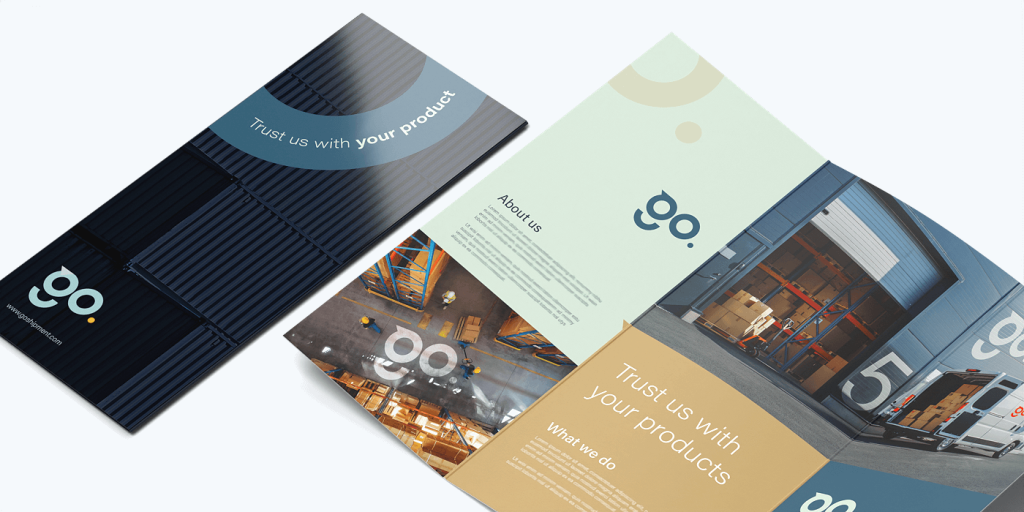
The Undeniable Importance of Brochure Printing:
Diving into Production: Types, Materials, and Techniques:

Crafting Compelling Content and Design:
Conclusion: Maximizing the Medium for Marketing Mastery
Commercial Printers In Phoenix, AZ: A Comprehensive Guide
Factors when choosing a commercial printer
Printer pricing and capabilities
Research Your Options:
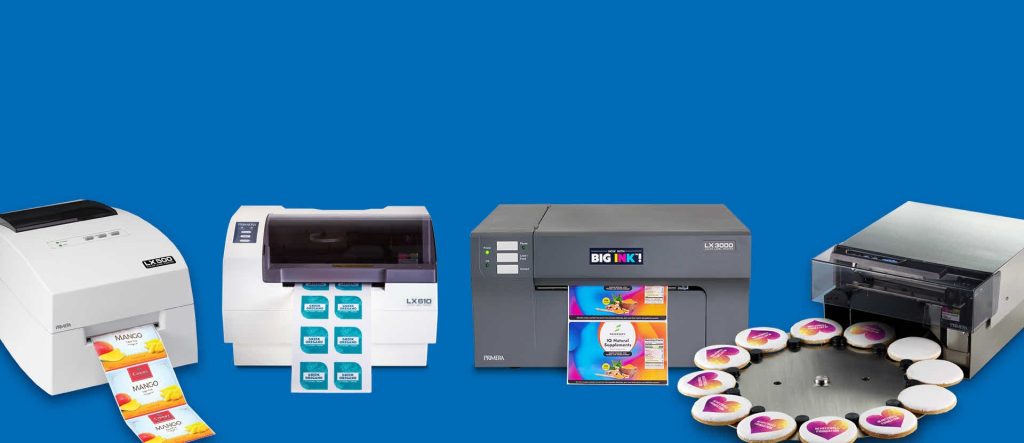
Look For Expertise:
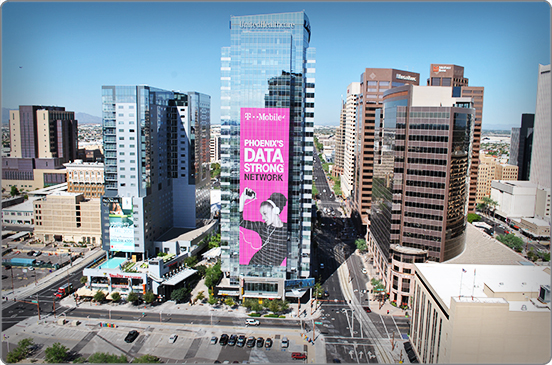
Check For Equipment And Capabilities:
Verify Delivery Time and Shipping Options:
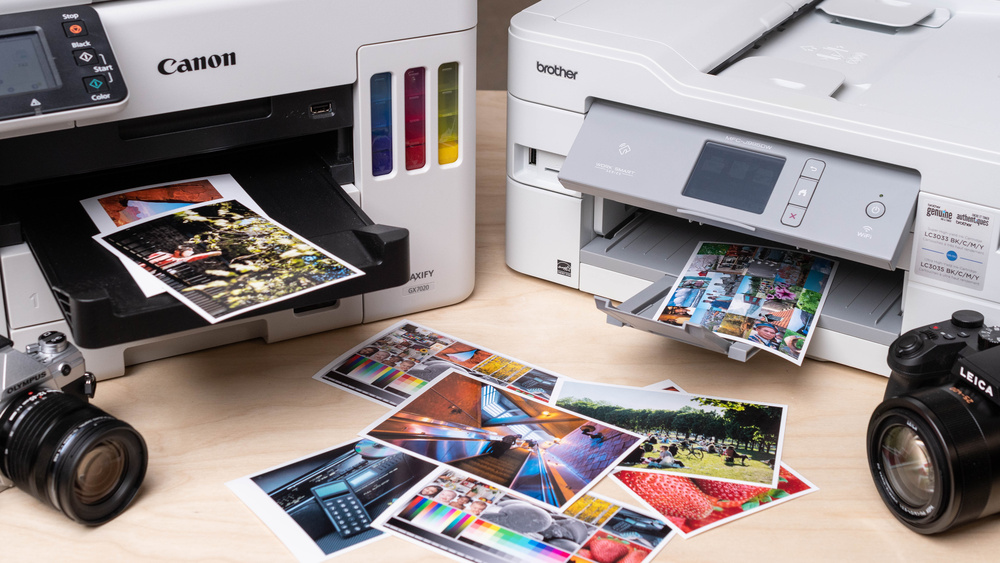
Quality Of Customer Service:
Printable Tarot Cards: Fortune-Telling with Style and Substance
Unraveling the Threads of Tarot’s Rich Tapestry

Tarot cards, with their roots stretching back to ancient civilizations, have traversed a fascinating historical journey. Originating as playing cards in 15th-century Europe, they gradually metamorphosed into powerful tools of divination, drawing inspiration from diverse cultural and esoteric traditions. Printable tarot cards, a testament to this rich heritage, bridge the gap between the ancient and the modern, preserving the symbolic language that has captivated mystics, scholars, and seekers for centuries.
The digital age ushered in a renaissance for tarot enthusiasts. With the advent of the internet, tarot decks found a new medium – the digital realm. Printable tarot cards emerged as a natural evolution, combining the tactile pleasure of physical cards with the digital convenience of the virtual world. Enthusiasts can explore an ever-expanding universe of tarot decks online, selecting and printing their chosen decks at home. This digital alchemy democratizes tarot, transcending geographical boundaries and cultural differences, uniting seekers under the cosmic umbrella of ancient wisdom.The Craftsmanship of Printable Tarot Cards: Merging Symbolism, Art, and Design
At the core of every tarot card lies a universe of symbolism. Each symbol, color, and archetype is pregnant with meaning, offering layers of interpretation and insight. Printable tarot card designers, akin to alchemists of the soul, meticulously weave these symbols into visually arresting masterpieces. Every card becomes a story waiting to be unfolded, a mirror reflecting the seeker’s deepest aspirations, fears, and desires. The symbolism in printable tarot cards transcends mere imagery; it becomes a bridge to the unseen realms, guiding seekers on their spiritual quests.
Printable tarot cards are not just digital renderings; they are embodiments of artistic alchemy. Talented designers infuse their creations with diverse styles, from the opulent elegance of the Renaissance to the avant-garde surrealism of the modern era. The aesthetics of printable tarot cards cater to every sensibility – from the seeker drawn to the ethereal beauty of fantasy art to the one enchanted by the simplicity of minimalist designs. Each deck becomes a portal, inviting seekers to embark on a visual and spiritual journey that resonates with their soul.
One of the unique facets of printable tarot cards lies in the interactive intimacy they offer. Seekers, through the act of printing and handling physical cards, establish a tangible connection with the spiritual realm. The tactile experience of shuffling, drawing, and arranging cards becomes a sacred ritual, enhancing the seeker’s intuitive abilities. Printable tarot cards, in their physical form, transcend the digital screen, allowing seekers to imbue the cards with their energy, creating a symbiotic relationship between the reader and the deck.The Soulful Odyssey: Navigating Life’s Mysteries with Printable Tarot
Printable tarot cards facilitate a profound communion between the seeker, the cards, and the universe. As the seeker shuffles the physical cards, they infuse them with their unique energy, creating a spiritual dialogue. The act of drawing cards becomes an intuitive dance, guided by the seeker’s subconscious mind. Printable tarot cards, as tangible artifacts, enhance this intuitive connection, allowing seekers to delve deep into their innermost thoughts and emotions, unlocking hidden truths and unveiling spiritual revelations.
Printable tarot cards empower seekers to integrate tarot into their daily rituals. The practice of drawing a daily card becomes a sacred act, offering profound insights into the seeker’s day. This ritual transforms mundane moments into opportunities for self-reflection and empowerment. The chosen card, a spiritual beacon, illuminates the seeker’s path, offering guidance, courage, and wisdom. Printable tarot cards, through these daily rituals, become companions on the seeker’s journey, nurturing self-awareness, resilience, and spiritual growth.
Tarot, in its printable form, becomes an invaluable tool for empowered decision-making. Seekers, faced with life’s complexities and uncertainties, turn to tarot for guidance. Printable tarot cards, with their diverse themes and interpretations, offer nuanced perspectives tailored to specific questions and situations. Seekers can align their queries with specific decks, infusing the readings with thematic resonance. This customization enriches the decision-making process, enabling seekers to make choices aligned with their higher selves, intuition, and spiritual aspirations.The Tarot Community: A Haven of Learning, Connection, and Spiritual Growth
The digital landscape has birthed vibrant tarot communities and forums, serving as virtual sanctuaries for seekers. Enthusiasts from diverse backgrounds and cultures converge in these online spaces, engaging in lively discussions, sharing insights, and seeking guidance from experienced readers. These communities foster a sense of belonging, uniting seekers in their quest for spiritual understanding. The exchange of knowledge, experiences, and wisdom transforms these virtual sanctuaries into bastions of spiritual growth and camaraderie.
Printable tarot cards, accompanied by a wealth of online resources, create a rich educational ecosystem. Seekers can access tutorials, articles, video guides, and podcasts, deepening their understanding of tarot symbolism, interpretation techniques, and esoteric wisdom. From beginners seeking foundational knowledge to seasoned readers refining their skills, these educational materials cater to seekers at various stages of their spiritual journey. The availability of these resources elevates tarot exploration from a mere practice to an ongoing and enriching quest for spiritual enlightenment.The Sacred Tapestry Unveiled: Printable Tarot Cards as Portals to Spiritual Enlightenment
Embracing the Infinite Possibilities of the Tarot Universe

Printing on Unconventional Surfaces: Beyond Paper and Fabric
Unconventional Surfaces: A Creative Playground
1. Metal
2. Glass
3. Wood
4. Plastic
5. Stone
6. Ceramics
7. Leather
8. Fabrics Other Than Textiles
9. Concrete
10. Plaster
The Technology Behind Printing on Unconventional Surfaces
1. UV Printing
2. Sublimation Printing
3. Screen Printing
4. Thermal Transfer Printing
5. Direct Printing
6. 3D Printing
Applications of Printing on Unconventional Surfaces
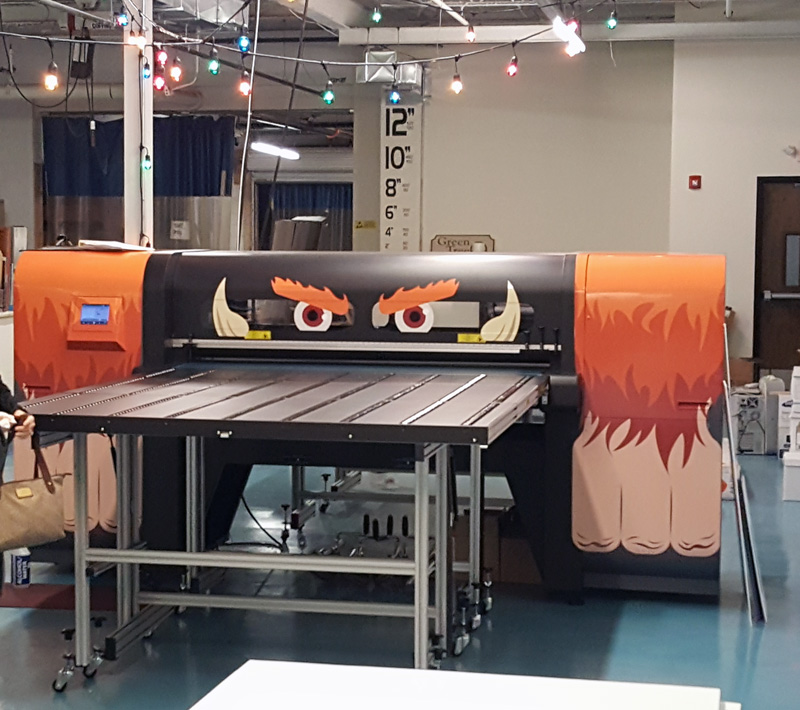
1. Architectural Design: Shaping the Future of Buildings
2. Interior Design: Creating Unique and Captivating Spaces
3. Retail and Branding: Making a Lasting Impression
4. Art and Decor: Artistry Beyond Canvas
5. Industrial and Manufacturing: Precision and Customization
6. Construction and Infrastructure: Building the Future
Challenges and Considerations: Navigating the Unconventional

1. Surface Preparation: The Foundation of Quality
2.
3. Durability: Endurance in the Face of Challenges
4. Cost and Expertise: Investment and Skill
5. Design Considerations: Adapting to Unique Challenges
A World of Creative Potential
Exploring the World of Large Format Printing: A Comprehensive Guide
Understanding Large Format Printing
Applications of Large Format Printing
Large Format Printing Technologies
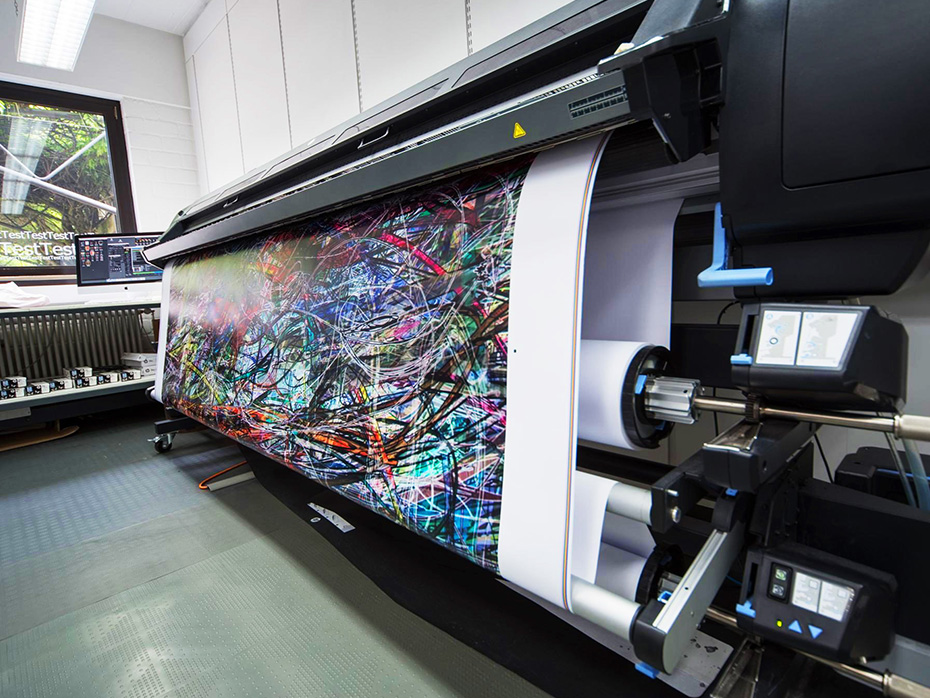
Creative Possibilities
The Expanding Influence of Large Format Printing
Retail and Branding
Architecture and Construction
Entertainment and Events
Interior Design and Décor
Art and Photography

The Art of Offset Printing: A Comprehensive Guide
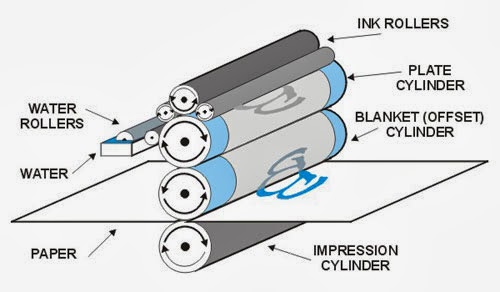

The AI Revolution in Printing: Transforming Efficiency, Quality, and Sustainability
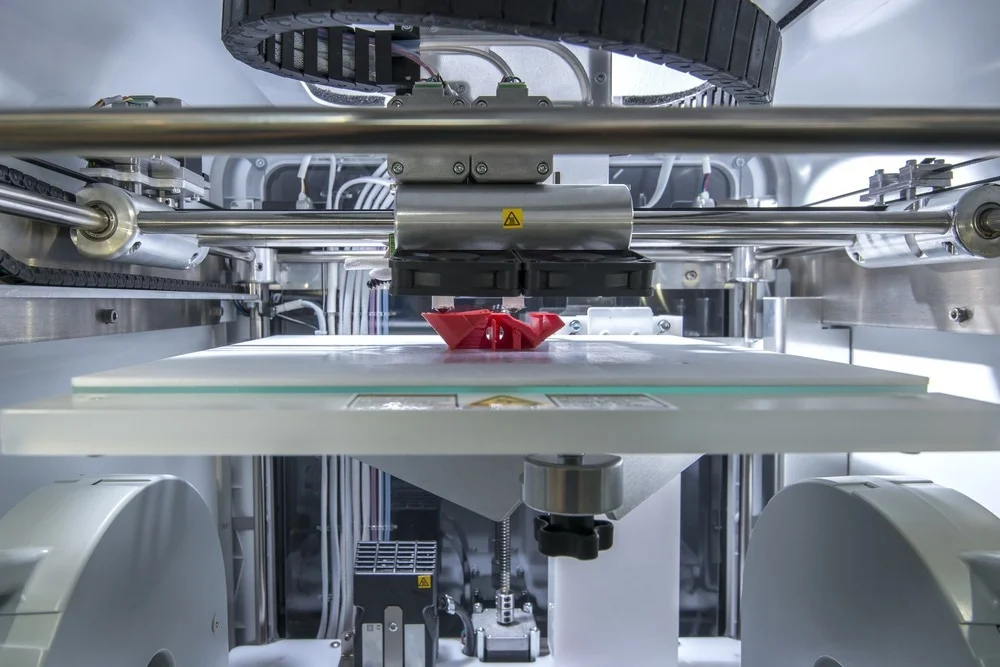
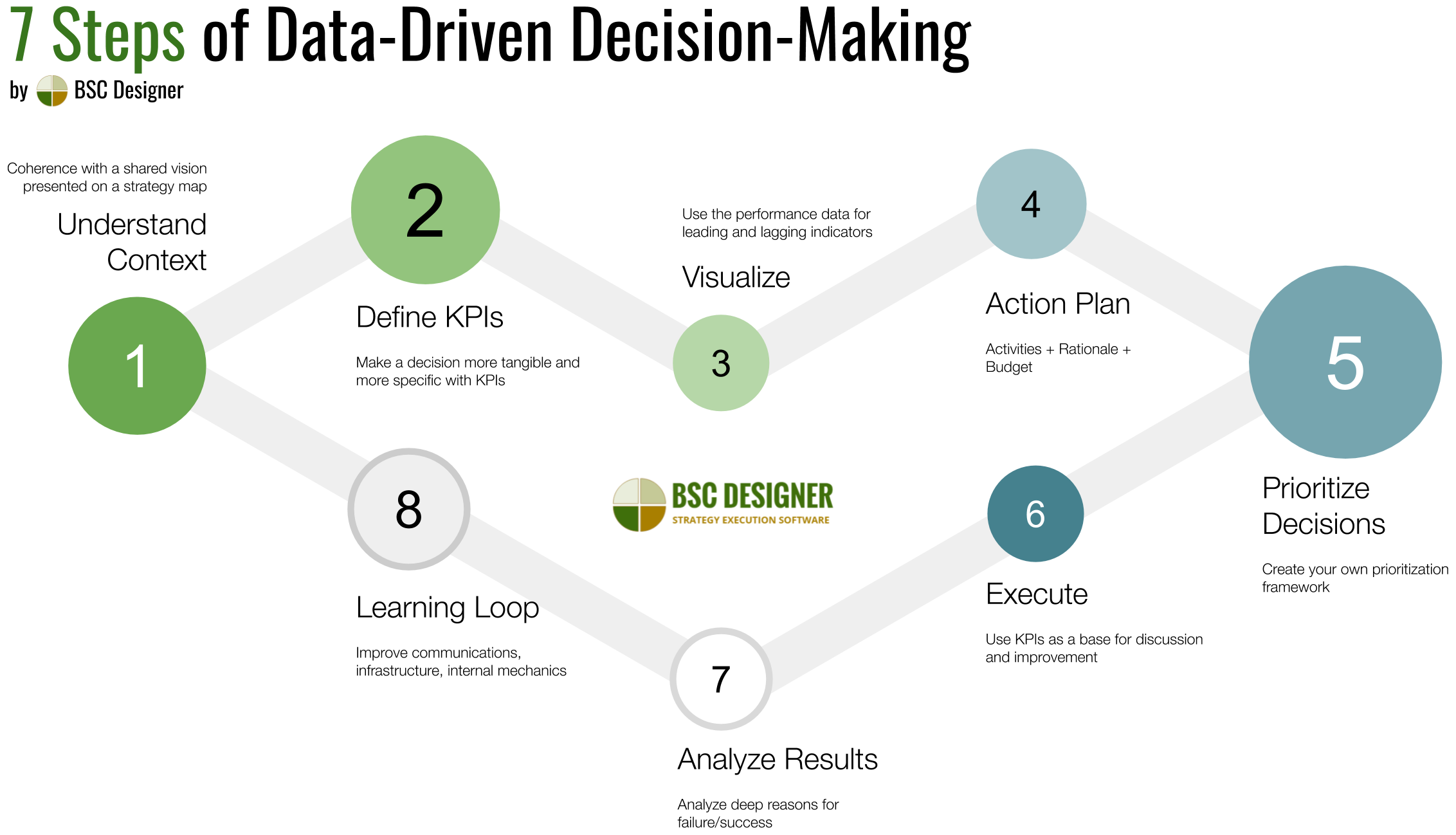
The Top 5 Essential Elements for a Successful Print Marketing Campaign
1. High-Quality Images And Graphics
2. Clear And Concise Marketing Message
3. Establishing Relevant Business Goals For The Campaign
4. Creating An Effective Marketing Strategy To Reach Your Target Market
5. Allocating An Appropriate Budget For Your Marketing Efforts

Conclusion
Print Marketing On A Budget: The Top 5 Affordable Strategies for Small Businesses
Strategy 1: DIY Design And Printing
Strategy 2: Utilize Local Partnerships & Networking Opportunities
Strategy 3: Invest In Affordable Print Materials
Strategy 4: Networking And Community Events
Strategy 5: Advertise On Popular Online Platforms

Conclusion
Print Marketing 101: The Top 5 Strategies Every Marketer Should Master
Strategy 1: Develop Your Brand
Strategy 2: Compelling Design And Copywriting
Strategy 3: Get Creative With Print Ads & Promo Materials
Strategy 4: Optimize Your Print Ads For Results
Strategy 5: Consistency In Branding

Conclusion
Print Marketing Success Stories: The Top 5 Brands That Nailed It
Success Story 1: Harley Davidson
Success Story 2: Leo Burnett
Success Story 3: Burger King
Success Story 4: Energy Drink
Success Story 5: Nike

Conclusion




